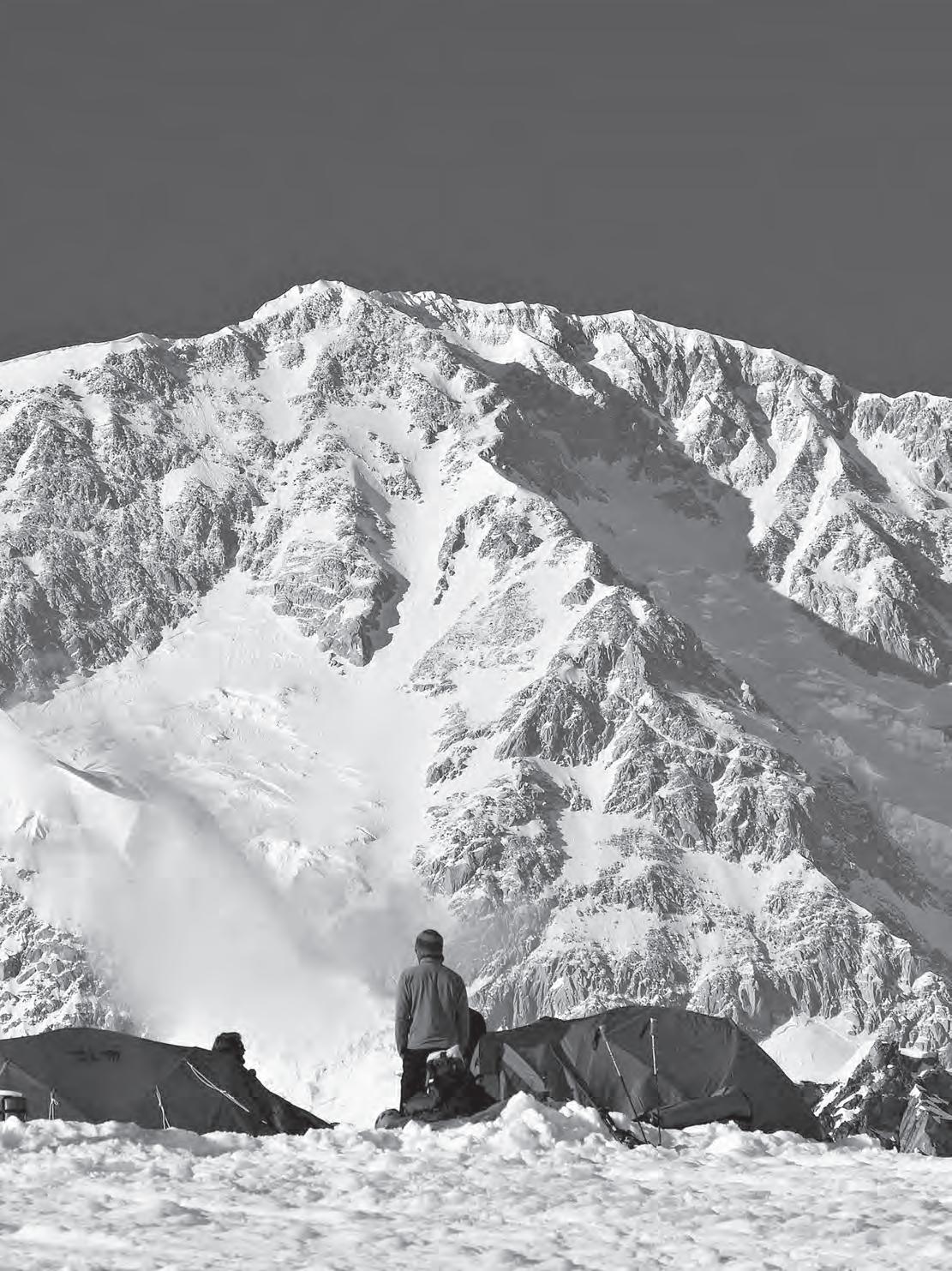

Follow the Leader.
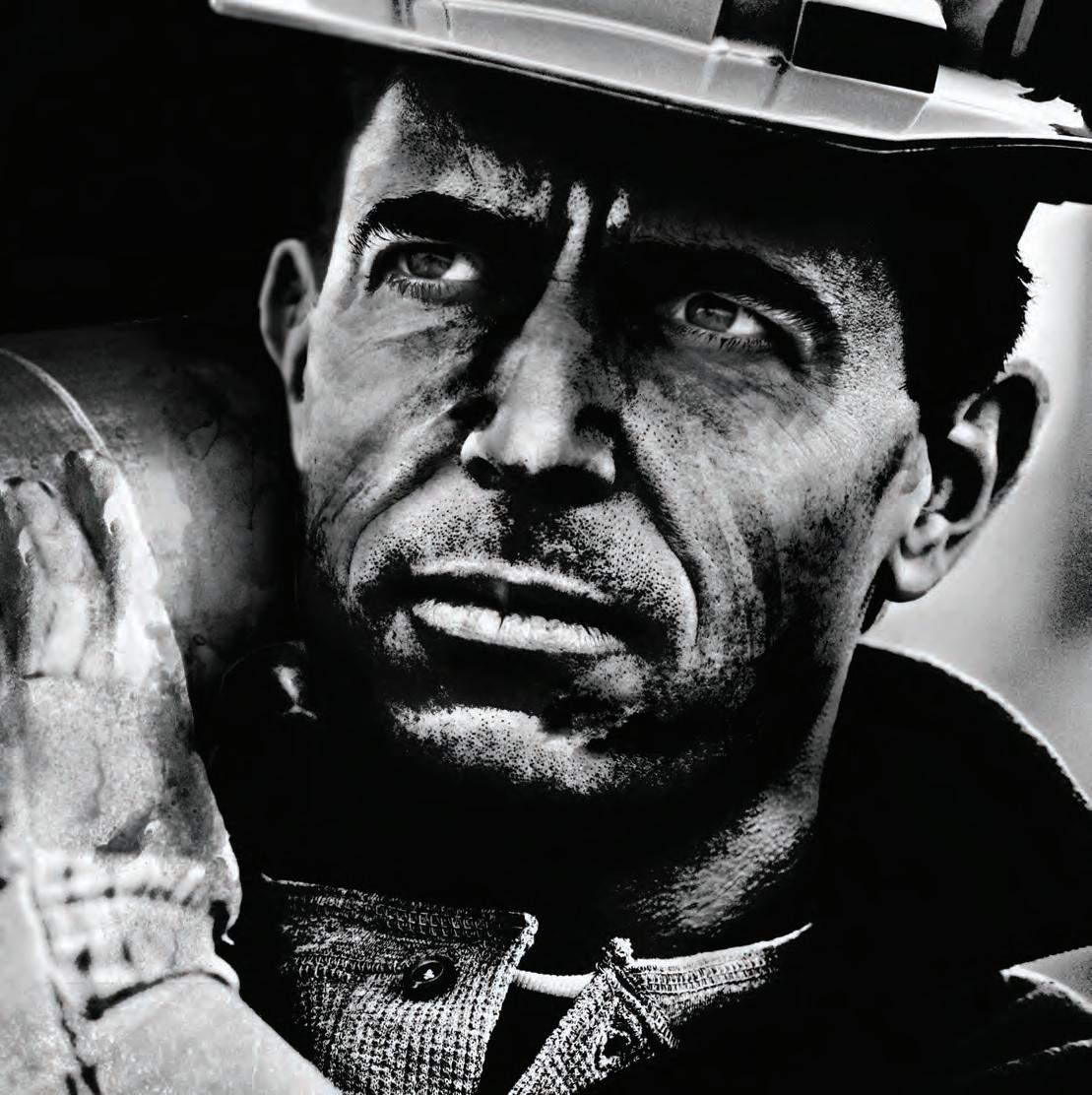
The global industry leader in critical information and insight, IHS continues to invest in the progress of the Canadian energy market so you can get from discovery to drilling in record time. By updating, improving and streamlining our Canadian products and services, we have delivered workflow integration between IHS PETRA® and IHS AccuMap®; created solutions for better access to global resources, from well log databases to subject matter experts; and continued to provide transparency and insight to Canadian energy businesses that need actionable information.
See how IHS is investing in Canada at www.followihs.com.
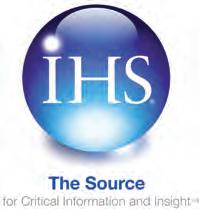
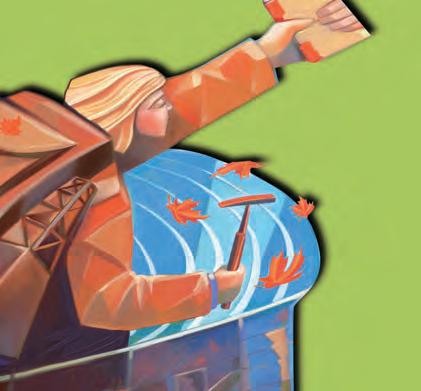
CSPG OFFICE
#110, 333 – 5th Avenue SW Calgary, Alberta, Canada T2P 3B6
Tel: 403-264-5610
Web: www.cspg.org
Office hours: Monday to Friday, 8:30am to 4:00pm
Executive Director: Lis Bjeld
Tel: 403-513-1235, Email: lis.bjeld@cspg.org
Member Liaison: Bea McDowell
Tel: 403-513-1226, Email: bea.mcdowell@cspg.org
Member Services: Dayna Rhoads
Tel: 403-513-1225, Email: dayna.rhoads@cspg.org
Communications and Publications: Caitlin Young
Email: caitlin.young@cspg.org, Tel: 403-513-1230
Programs Development: Aileen Lozie
Tel: 403-513-1227, Email: aileen.lozie@cspg.org
Accounting and Office Administration: Kasandra Klein
Tel: 403-513-1233, Email: kasandra.klein@cspg.org
Corporate Sponsorship: Lis Bjeld
Tel: 403-513-1235, Email: lis.bjeld@cspg.org
EDITORS/AUTHORS
Please submit RESERVOIR articles to the CSPG office. Submission deadline is the 23rd day of the month, two months prior to issue date. (e.g., January 23 for the March issue).
To publish an article, the CSPG requires digital copies of the document. Text should be in Microsoft Word format and illustrations should be in TIFF format at 300 dpi., at final size. For additional information on manuscript preparation, refer to the Guidelines for Authors published in the CSPG Bulletin or contact the editor.
Technical Editors
Ben McKenzie Colin Yeo (Assistant Tech. Editor) Tarheel Exploration EnCana Corporation Tel: 403-277-4496 Tel: 403-645-7724
Email: bjmck@live.com Email: colin.yeo@encana.com
Coordinating Editor
Caitlin Young, Publications Coordinator, CSPG Tel: 403-513-1230, Email: caitlin.young@cspg.org,
ADVERTISING
Advertising inquiries should be directed to Caitlin Young, Tel: 403-513-1230 email: caitlin.young@cspg.org. The deadline to reserve advertising space is the 23rd day of the month, two months prior to issue date.
The RESERVOIR is published 11 times per year by the Canadian Society of Petroleum Geologists. This includes a combined issue for the months of July and August. The purpose of the RESERVOIR is to publicize the Society’s many activities and to promote the geosciences. We look for both technical and non-technical material to publish. Additional information on the RESERVOIR’s submission guidelines can be found at http://www.cspg. org/publications/pubs-reservoir-submissions.cfm.
The contents of this publication may not be reproduced either in part or in full without the consent of the publisher. Additional copies of the RESERVOIR are available at the CSPG office. No official endorsement or sponsorship by the CSPG is implied for any advertisement, insert, or article that appears in the Reservoir unless otherwise noted. All submitted materials are reviewed by the editor. We reserve the right to edit all submissions, including letters to the Editor. Submissions must include your name, address, and membership number (if applicable). The material contained in this publication is intended for informational use only.
While reasonable care has been taken, authors and the CSPG make no guarantees that any of the equations, schematics, or devices discussed will perform as expected or that they will give the desired results. Some information contained herein may be inaccurate or may vary from standard measurements. The CSPG expressly disclaims any and all liability for the acts, omissions, or conduct of any third-party user of information
and
and its
or
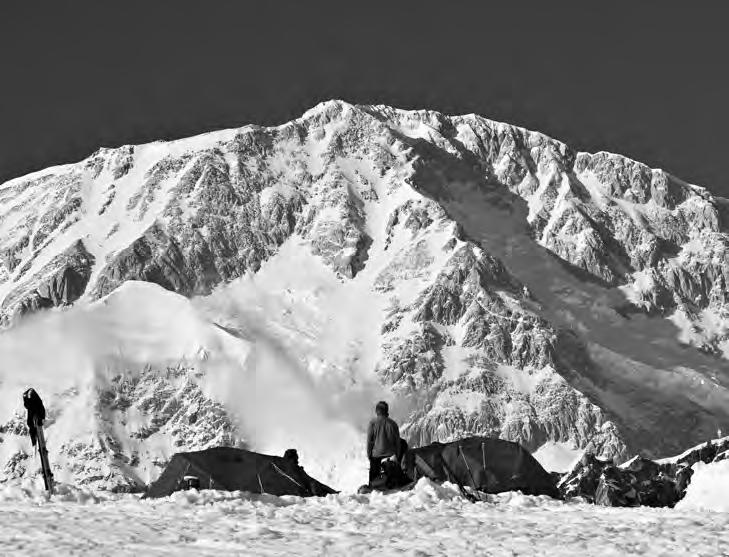
FRONT COVER
Denali NP, Alaska - Climbers
Photo by Mark Dzikowski.
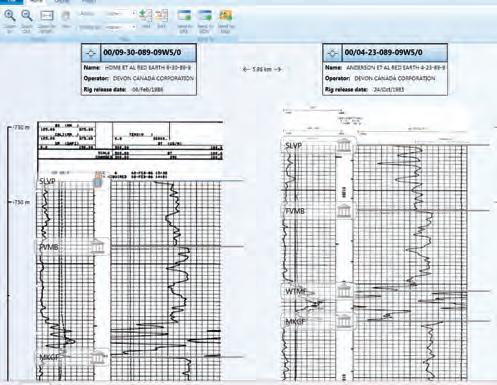



Since 1927...















CSPG EXECUTIVE
President Kirk Osadetz • Geological Survey of Canada, Calgary kosadetz@nrcan.gc.ca Tel: (403) 292-7022
Vice President
Robin Mann • AJM Deloitte rcmann@ajmpc.com Tel: (403) 648-3210
Past President
John Varsek • Cenovus Energy john.varsek@cenovus.com Tel: (403) 645-5417
Finance director
Darren Aldridge • Baker Hughes Incorporated darren.aldridge@bakerhughes.com Tel: (403) 537-3400
assistant Finance director
Andrea Hood • geoLOGIC systems ltd. ahood@geologic.com Tel: (403) 262-1992
Program director
Brett Norris • TransGlobe Energy Corp. brettn@trans-globe.com Tel: (403) 264-9896
assistant Program director
Jon Noad • Murphy Oil Corporation jon_noad@murphyoilcorp.com Tel: (403) 294-8829
serVices director
Chris Seibel • Nexen Inc. chris_seibel@nexeninc.com Tel: (403) 699-4558
assistant serVices director
Michelle Hawke • Apache Canada Ltd. Michelle.Hawke@apachecorp.com Tel: (403) 261-1200
communications director
Jim Barclay • ConocoPhillips Canada
Jim.E.Barclay@conocophillips.com Tel: (403) 532-3889
assistant communications director
Stephen Hubbard • University of Calgary steve.hubbard@ucalgary.ca Tel: (403) 220-6236
outreach director
Steve Dryer • Whiskey Jack Resources Inc. whiskeyjackresources@telus.net Tel: (403) 969-2292
assistant outreach director
Simon Haynes • Statoil Canada Ltd. sihay@statoil.com Tel: (403) 724-0364
executiVe director
Lis Bjeld • CSPG lis.bjeld@cspg.org Tel: (403) 264-5610
EXECUTIVE COMMENT
A message from President, Kirk Osadtez
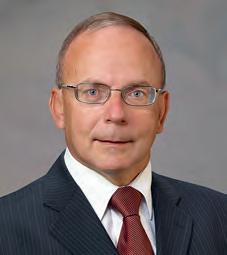
Change and Renewal
As 2011 draws to a close the CSPG once again enters its cycle of change and renewal. You will have already voted for those CSPG Executive Committee positions that are being contested and you will have familiarized yourself with those EC members who are returning or are acclaimed. I invite you to join us January 10th 2012 at the TELUS Convention Centre for our brief Annual General Meeting.
It has been a very good year for the CSPG and I have many people to thank and congratulate as a result of our extraordinary accomplishments during 2011. For 2012 and beyond, the future looks even brighter because of years of progressive improvements that we have added to in 2011. However, there will be other opportunities for those thanks, celebrations, and reflections. Instead, I propose to use this column to identify some of our greatest challenges and to share some of my ideas with you regarding possible solutions.
Our most important challenges can be considered as a series of personal questions since we are a society of individuals. Although there are many such questions, I propose to look at here:
1. H ow does membership and participation in CSPG activities enhance my career?
2. W hat kind of CSPG will serve my career and employers well?
3. I s Scientific Outreach important to me and my employer?
In some ways I am a pretty typical CSPG member, so I can suggest answers to the first question based on personal experience. The CSPG provided me with opportunities to work with, gain experience from, and befriend others whose scientific knowledge and corporate culture was different from
my own. It provided me with opportunities to gain experience and demonstrate my talents and abilities to the benefit of my career, and it provided me with the chance to have a truly “scientific” career in our upstream petroleum business.
The experience that we all gain from our contact with other CSPG members, whether it is gained through service on our Committees and Divisions, participation in our conferences and social events, or by writing or reading works in our publications gave me a perspective on challenges and problems that was richer and broader than I would have gained by working in my own corporate structure only. Just as we can be inspired by reading benchmark CSPG publications we can also find new approaches to both common and unique scientific and business problems as a result of mingling in the diverse talents of our membership. If your goal is to climb the corporate ladder, you and many colleagues can always take an MBA through university extension programs, but where else can you assume the management and financial stewardship of a multi-million dollar corporate cash-flow and nearly a million dollars of financial assets to demonstrate that your company should entrust you with ever-increasing financial responsibility. If your goal is to manage people, then the opportunity to effectively manage volunteer Committees and produce worldclass events is yours for the effort of offering your time and talent. Once you’ve become an effective manager of volunteer talent you will find managing a corporate human resource a simple thing – I promise.
The CSPG provides Scientific and Technical Programs, including educational offerings; Social Events, and Scientific Outreach opportunities. It is a time-honoured tradition of our Canadian industry that members and their employers value the Scientific and Technical Program as the (Continued on page 7...)
Finest Geoscience Training for One Low Price
Courses include:
• Deepwater Sedimentation
• Exploration for Deep-Water Sands Using Seismic Sequence Methodology
• Carbonate Reservoir Geology
• Seismic Imaging of Carbonates
• Carbonate Depositional Systems
• Quick Guide to Carbonate Well Log Analysis
• Interpretation of 3D Seismic Data
• Seismic Amplitude Interpretation
• Seismic Stratigraphy and Seismic Geomorphology
• Evaluation and Quantitative Modeling of Fractured Reservoirs
• Hydraulic Fracturing of Shales
• Surface Geochemical Exploration For Oil And Gas
(Four concurrent sessions each day – mix and match according to your interests and training needs. Buffet lunch and refreshments included each day.)
Small AAPG Bookstore open during breaks each day
(Your five-day badge can be transferred to a friend or colleague if you can't attend all five days.)
Hosted by the
Norris Conference Center:
803 Town & Country Lane
Houston, TX 77024
Phone: 713-590-0950
Fax: 713-590-0961
Special group rate at nearby Hotel Sorella
Registration and information:
Toll-free (U.S. and Canada) 888-338-3387, or 918-560-2650
Fax: 918-560-2678
E-mail: educate@aapg.org
Download a registration form at: www.aapg.org/education/wec.cfm

Since 1927...

CORPORATE SPONSORS
Di A mo ND
IH S
GEOLOGIC SYSTEMS LTD
SCHLUMBERGER C ANADA LTD
Pl Ati N um
AGAT L ABORATORIES
CENOvUS
CONOCOPHILLIPS
NE xEN INC . TALISMAN ENERGY
POGGENPOHL
G olD
APEGGA
CSPG EDUCATIONAL TRUST FU ND
DE vON CANADA
ENC ANA
IM PERIAL OIL
SHELL
WE ATHERFORD L ABORATORIES
S ilver
ARC FINANCIAL CORPORATION
ENERPLUS
JE WEL SUITE
ROx AR
B ro N ze
ATHABASCA OIL SANDS
BLUEBACK RESERvOIR
PARADIGM
GEOvARIANCES
CSEG FOUNDATION
RPS BOYD PE TROSEARCH
HALLIBURTON ENERGY SERvICES
SU NCOR E NERGY
SUNDOG PRINTING
TUCKER WIRELINE SERvICES
A S OF NOVEMBER 10, 2011
(...Continued from page 5)
most valuable part of that Triad. But our program is something we offer from our Members to our Membership. Therefore, the value of that experience and the strength of it is something that depends on what we each put into it. Participation in our conferences and writing for our publications are demanding activities. But it makes you a more confident and more influential scientist and employee. Sharing that knowledge, ability and confidence with others is also personally rewarding. Open that abstract form, dust off that thesis or report, or sit down this winter and start pulling together the materials to provide that CSPG Continuing Education course. It is not easy to present or publish, but it will give you new skills and earn you the respect of your colleagues, upon whom you might have to prevail one day.
Without access to resources and rational policies, and regulations for their exploration and development, we will all be out of job and vocation. The general public has tremendous influence over our political
F U TURE PROSPECTS
By Ayaz Gulamhussein, Future Prospects Chair
On Thursday, October 13, 2011 CSPG held its second annual Future Prospects event catering to young geoscientists. Over 200 geoscientists under the age of 35 plus over 50 university students came together at Belgo Brasserie in downtown Calgary. Future Prospects serves as a social networking and learning opportunity for young geoscience professionals, graduate students, and undergraduate students in their third or fourth year of university. It also gives veteran geoscientists the chance to mix and mingle with the new generation.
On the top floor of Belgo Brasserie, there was no shortage of conversation. Everyone in attendance appeared to be in a great mood, and there was a contagious amount of explorationist enthusiasm in the air! Opinions and ideas about the future of the oil and gas industry, to debates about the viability and scope of the latest resource plays were abundant.
This event was well attended by the current CSPG Board of Directors, in addition to senior level geoscientists from various E&P companies based in Calgary. These individuals provided great support, insight, and encouragement to all of the young geoscientists that were in attendance.
process and that process decides where your can drill, complete, and produce. Alberta is both one of the most naturally beautiful and economically dynamic regions in Canada. As Bill Fyfe, former President of the Royal Society of Canada once said, “Only wealthy societies can afford an environmental conscience.” However, there are those who would ignore the facts press their own agendas. If you don’t think that a scientifically literate, well informed, and rational public is important to your work and career I can only say, “Mackenzie valley Project” and “Quebec Shale Gas,” since delay can be as effective as denial.
Is belonging to and participating in CSPG activities important to your career and the goals of your employer. You bet it is!
The second annual Future Prospects event would not have been possible without the tremendous support from all of our sponsors. Cenovus Energy (Premier Sponsor), Athabasca Oil Sands Corp. ( ve nue Sponsor), TAQA North (Education Sponsor), Crescent Point Energy (Gold Sponsor), EnCana (Silver Sponsor), Roke Technologies (Silver Sponsor), Trident Exploration (Bronze Sponsor), all afforded the CSPG an opportunity to bring together young geoscientists from the Canadian petroleum industry. A special thank you goes to Halliburton and Baker Hughes for graciously donating the door prizes.
Future Prospects was a successful and fun event for all. Going forward, the CSPG will continue to grow this event by encouraging young geoscientists to share their work with their peers and to get involved with the CSPG. As the number of individuals that attend the event grows, the Future Prospects event will unequivocally become one of the most important networking events for young explorers.
Watch for the next event in the Fall of 2012!
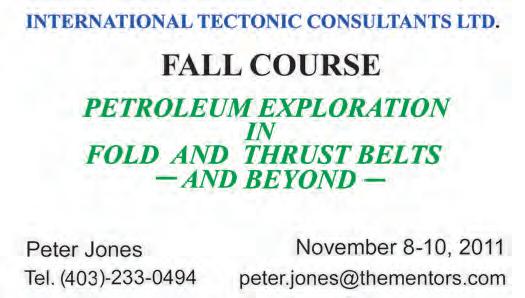
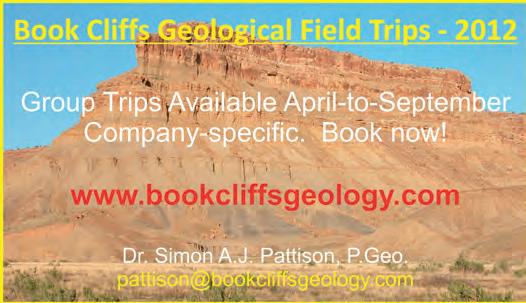
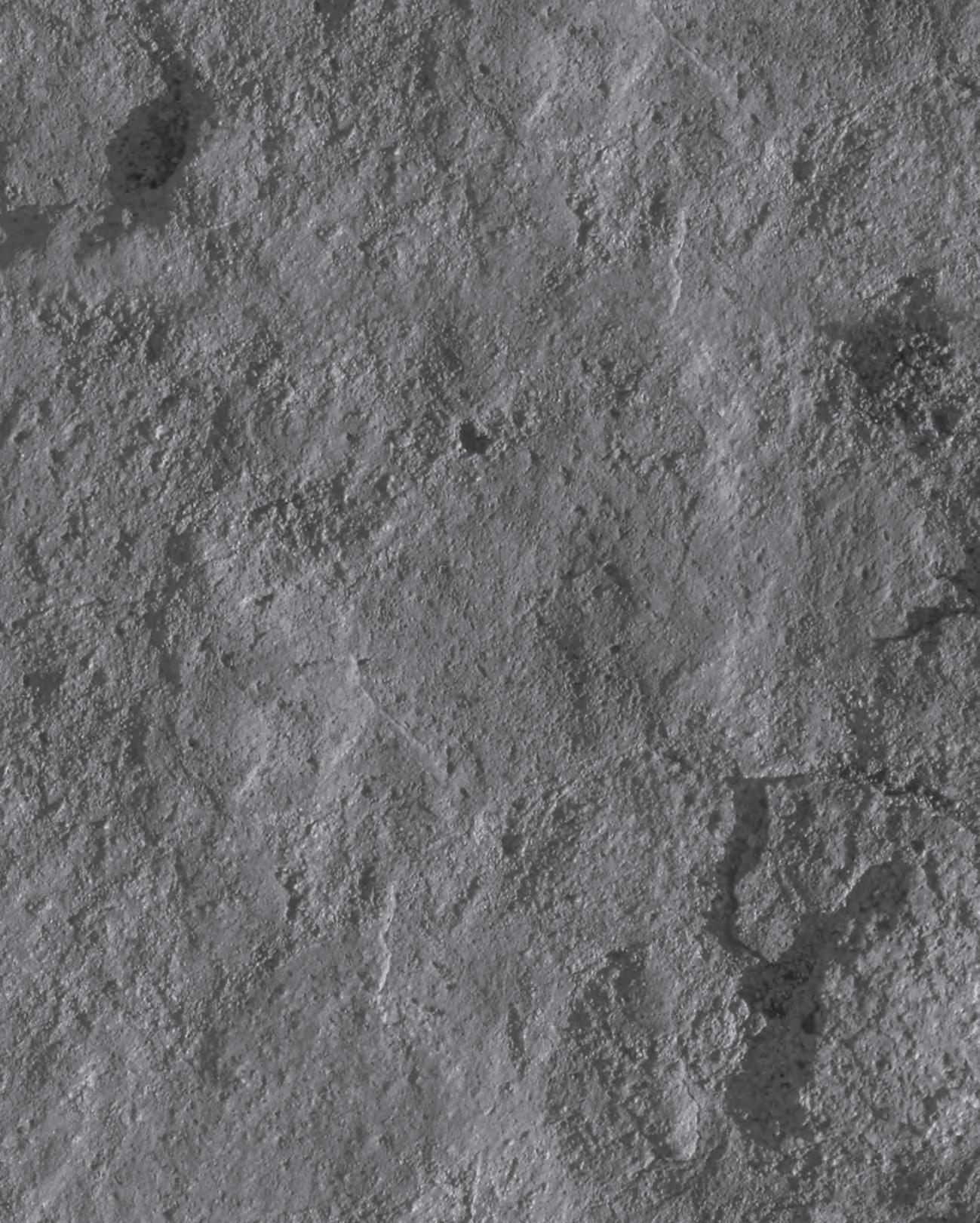
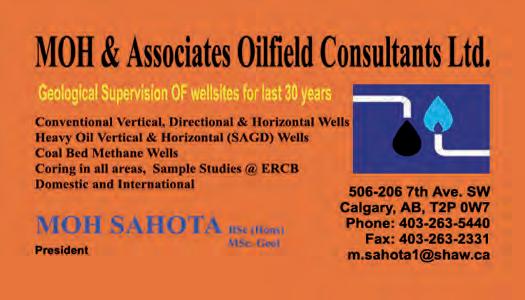



technicaL Luncheons DECEMBER LUNCHEON
Environmental management of the Alberta oil sands: New federal and provincial initiatives
SPEAKER
Andrew D. m i all, F r S C
Professor of Geology University of Toronto
tu esday, d e cember 6, 2011 10:30 am, a n nual h o liday s o cial presented by geo Log ic systems ltd. 11:30 am, te chnical Luncheon presentation c a lgary te L u s convention cen tre c algary, a l berta
Join us for this year’s CSPG Annual Holiday Social. This is a sellout social event that you don’t want to miss. Buy your tickets early!
Please note: the cut-off date for ticket sales is 1:00 pm, Wednesday, november 30, 2011. csPg member ticket Price: $45.00 + gst. non- member ticket Price: $45.00 + gst.
Each CSPG Technical Luncheon is 1 APEGGA PDH credit. Tickets may be purchased online at www.cspg.org.
There have been repeated environmental protests in the US and Europe about “Canada’s dirty oil.” Recent protests in Washington and elsewhere have been aimed at not only shutting down the oil sands industry, but preventing the building of pipelines to serve Canada’s export market.
In the summer of 2010, protests of a similar nature were accompanied by the release of a disturbing research report by respected environmentalist David Schindler (University of Alberta) demonstrating that water pollution studies being carried out at the behest of the Government of Alberta and the oil sands industry were not accurately reporting the presence of pollutants that may be responsible
for deformities in the freshwater fish population. There were also continuing fears about unusual cancers in the First Nations population at Fort Chipewyan, which is downstream from the oil sands development area.
In response to these concerns, federal Environment Minister, The Hon. Jim Prentice established the Oil Sands Advisory Panel in October 2010. The completion
Webcasts sponsored by
of studies by this panel coincided with the release of an independent report on the “Environmental and health impacts of Canada’s oil sands industry” by the Royal Society of Canada in December 2010. Both the federal study and the RSC study concluded that many of the environmental concerns being voiced by activists were overstated, but that considerable further research was necessary, that existing (Continued on page 10...)
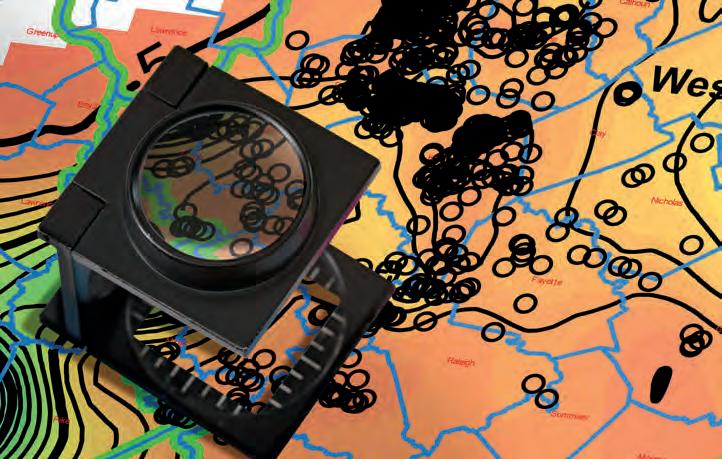

regulation and management methods were inadequate, and that much more extensive and more sophisticated scientific monitoring of the industry was required.
In January 2011, Alberta Environment Minister, The Hon. Rob Renner established the Alberta Environmental Monitoring Panel, which built on these earlier studies and delivered a report in June 2011 containing twenty recommendations, most of them centred on the establishment of an independent Environmental Monitoring Commission. The government appears to have accepted these recommendations, but the current state of political uncertainty in Alberta (as of late September 2011) has so far prevented any specific government actions to implement the recommendations.
Environment Canada scientists were instructed by the Minister in December 2010 to start developing a science plan for a fullscale environmental monitoring program to deal with air, water, groundwater, and all other related environmental issues. The details of this plan were released by current Environment Minister, The Hon. Peter Kent, in two stages, in March and in July 2011. It remains to be determined how the federal and provincial governments integrate their environmental work. While the Alberta government is responsible for managing the environmental impact of the oil sands projects, the federal government has responsibility for the health and welfare of Aboriginal communities, for the health of Canada’s fisheries, and for trans-boundary pollution issues, such as the air pollution thought to be causing acid-rain problems in Saskatchewan. At this time, Alberta
ROCK SHOP
does not have the fully trained scientists and well-equipped laboratories that still exist at Environment Canada (despite years of cutbacks), and so a significant degree of federal-provincial cooperation will be required to answer the legitimate environmental concerns.
Studies indicate that air and water pollution can be managed effectively as long as the necessary, properly planned field sampling is carried out first. It is the poor quality of the initial field work, plus the lack of high-quality analytical laboratory standards that has, to this point, inhibited proper environmental management. The massive disruption caused by surface mining can be managed by appropriate restoration work, but up to this time, investment in restoration has been inadequate. Increasing efficiencies in energy and water use are steadily reducing the environmental footprint of oil sands projects, although the total footprint continues to expand with each new project. Suncor has developed a new treatment protocol for the mine tailings that promises to considerably speed up the process of drying out and restoring tailings ponds. Meanwhile, considerable research is still required to understand the possible environmental implications of new in-situ extraction procedures.
Contrary to claims by the protesters in Washington and elsewhere, effective environmental management by industry and government can be achieved, but industry spokespersons have made it clear that they want proper direction and leadership. Millions of dollars are already being spent in this area, but it has not been spent well, and it is to be hoped, with the
appropriate political response to the two major government panel studies and the RSC report, that this world-class energy resource can be managed in a way that will place Alberta and Canada in a leadership position with regard to the administration of one of the world’s remaining large fossilfuel energy resources.
BIOGRAPHY
Andrew D. Miall, B.Sc., Ph.D., D.Sc., FRSC, is Professor of Geology at the University of Toronto, and the inaugural incumbent of the Gordon Stollery Chair in Basin Analysis and Petroleum Geology. He was educated in London (UK) and Ottawa, and has worked for Shell Canada and J. C. Sproule and Associates. From 1972-1979 he was a Research Scientist with the Geological Survey of Canada, Calgary, carrying out regional basin studies in the Arctic Islands. He is the holder of a Higher Doctorate (D.Sc.) from University of London and an Honorary Doctorate from the University of Pretoria. He was inducted into the Royal Society of Canada in 1995 and has served terms as Vice-President (2005-2007) and President (2007-2009) of the Academy of Science. Andrew is the author of Principles of Sedimentary Basin Analysis, The Geology of Fluvial Deposits, and The Geology of Stratigraphic Sequences. He is the co-author (with Nick Eyles) of Canada Rocks: the Geologic Journey. He is currently devoting much of his time to speaking and writing about issues at the nexus of energy and the environment. He was a member of the federal Oil Sands Advisory Panel (October-December 2010) and the Alberta Environmental Monitoring Panel (January-June 2011).
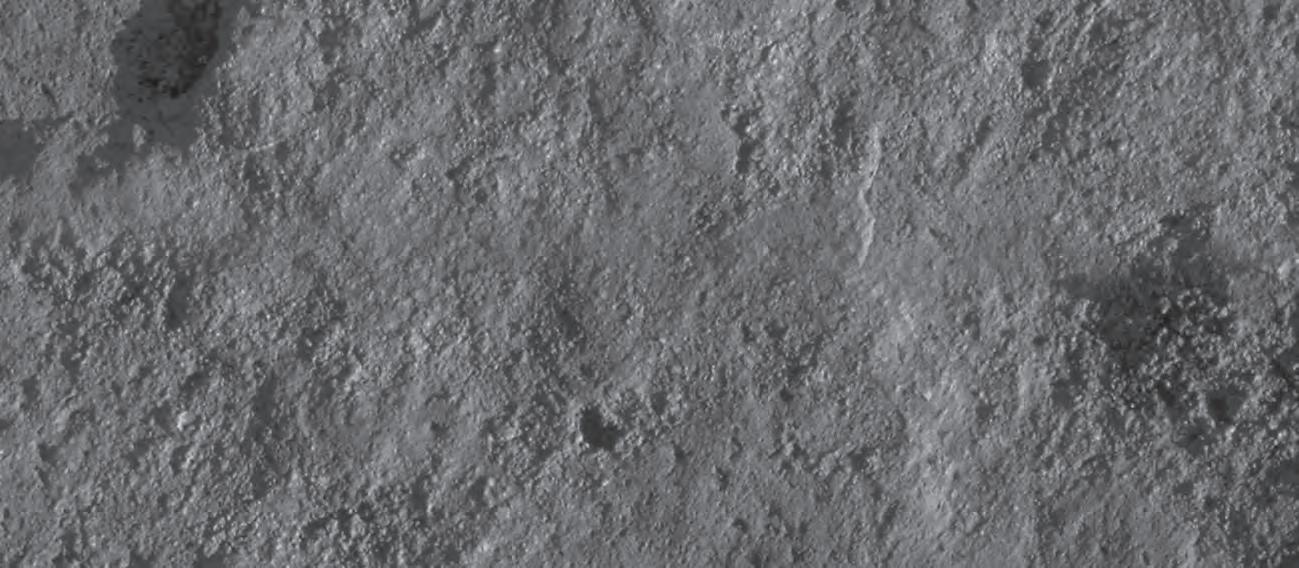
Jocelyn Lampron, P. Geol. President & CEO

technicaL Luncheons JANUARY LUNCHEON
The once
and future
battles of Thor and the Midgard Serpent: The Antarctic circumpolar current and glacial/ interglacial climate
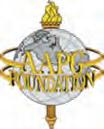
SPEAKER
Joellen l . r u ssell Department of Geosciences, University of Arizona
11:30 am
tu esday, January 10, 2012
c a lgary, te L u s convention cen tre c algary, a l berta
Please note: the cut-off date for ticket sales is 1:00 pm, thursday, January 5, 2012. csPg member ticket Price: $42.00 + gst. non-member ticket Price: $45.00 + gst.
This luncheon is also the CSPG Annual General Meeting
Each CSPG Technical Luncheon is 1 APEGGA PDH credit. Tickets may be purchased online at https://www.cspg.org/eSeries/source/Events/ index.cfm.
The vast Southern Ocean region surrounding the Antarctic continent is the only place in the global ocean where water upwells from more than two kilometers to the surface before sinking again. The deep of the Southern Ocean holds the key to the rate of warming of our atmosphere, because enormous amounts of heat and carbon can be stored in this ocean reservoir. In paleoclimate model simulations, wind position and
the overturning of deep water in the Southern Ocean explain some of the more puzzling features of glacial-interglacial carbon dioxide cycles, including the tight correlation between atmospheric carbon dioxide and Antarctic temperatures, the lead of Antarctic temperatures over carbon dioxide at terminations and the shift of the ocean’s 13C minimum from the North Pacific to the Southern Ocean. Cold glacial climates seem to have equatorward-shifted westerlies that allow more respired carbon to accumulate in the deep ocean. Warm climates like the present have poleward-shifted westerlies that flush respired carbon dioxide out of the deep ocean.
In global-warming simulations of future climate, poleward-intensified westerlies maintain a robust deep-water overturn around Antarctica even as rising atmospheric greenhouse gas levels induce warming that reduces the density of surface waters in the Southern Ocean. These results imply that the polewardintensification of the Southern Hemisphere Westerlies may prop open the Southern Ocean door to the deep ocean, allowing the ocean to remove relatively more heat and anthropogenic carbon dioxide from the atmosphere, slowing the rate of warming of the atmosphere.
BIOGRAPHY
Joellen Russell received her bachelor’s degree at Harvard University in Environmental Geoscience before earning her Ph.D. at Scripps Institution of Oceanography, UCSD in Oceanography. Her fieldwork in the Southern Ocean studying the biogeochemistry of Mode and Intermediate Water led to a Postdoctoral Fellowship at the University of Washington’s Joint Institute for the Study of Atmosphere and Ocean. Prof. Russell then became a Research Scientist at Princeton University working at NOAA’s Geophysical Fluid Dynamics Laboratory during the intensive preparations for the Intergovernmental Panel on Climate Change Fourth Assessment. Prof. Russell’s work there on the westerly winds led to her greatest research accomplishment so far: the creation of a new paradigm in climate science, namely that warmer climates produce stronger westerly winds. This insight solved one of the long-standing climate paradoxes, the mechanism responsible for transferring onethird of the carbon dioxide in the atmosphere into the ocean and then back out again during our repeated glacial-interglacial cycles. She continues active collaboration with the
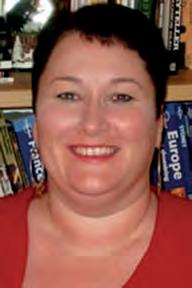
GFDL Earth System Model and Climate Model Development Teams on the latest ultra high-resolution model. Prof. Russell is currently serving as a member of the U.S. CLIVAR Office, Process Studies and Model Improvements Panel.
Prof. Russell joined the faculty in the Department of Geosciences at the University of Arizona in 2006 and has expanded her research on the role of the westerly winds in global climate to patterns of drought in the continental US during the last 1,000 years, the present and the future, and the circulation of the methane atmosphere on Saturn’s moon Titan with members of the Cassini Mission. Prof. Russell’s current research is focused on the joint venture between ExxonMobil and the UA Department of Geosciences, Convergent Orogenic Systems Analysis (COSA), exploring the interactions between climate and orography. Prof. Russell won the UA Provost’s Teaching Award in 2010 while successfully teaching introductory oceanography to over 1,000 undergraduates in a single class, the most popular science class on campus. She lives in Tucson with her husband and their two children.
Don’t miss the CSPG OP e n HOu S e monday December 12 11:30am to 5:30pm
technicaL Luncheons
Shelf edge deltas: How useful are they in exploration?
SPEAKER
r on Steel Jackson School, University of Texas at Austin
11:30 am
tu esday, January 24, 2012 c a lgary, te L u s c onvention c en tre c al gary, a l berta
Please note: the cut-off date for ticket sales is 1:00 pm, thursday, January 19, 2012. csPg member ticket Price: $42.00 + gst. non-member ticket Price: $45.00 + gst.
Each CSPG Technical Luncheon is 1 APEGGA PDH credit. Tickets may be purchased online at https://www.cspg.org/eSeries/source/Events/ index.cfm.
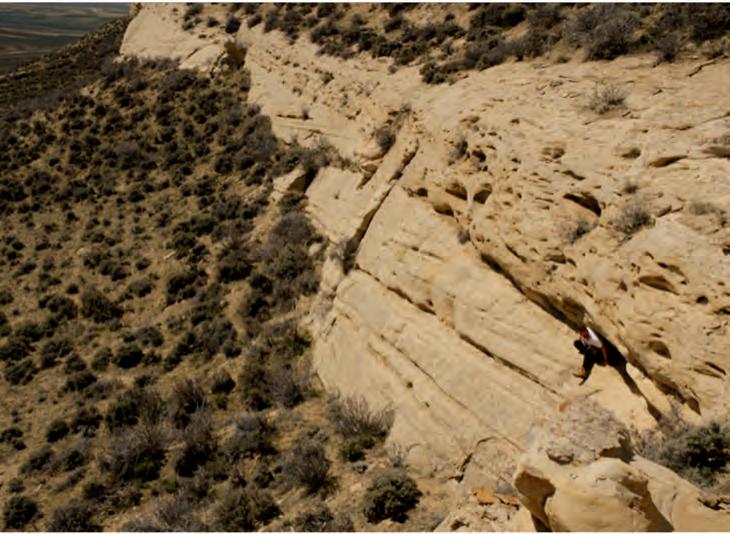
Fox Hills deltas near the Maastrichtian shelf edge, Washakie Basin, Wy.
♦ ♦
♦
♦
Shelf-edge deltas are the outermost end member of deltas that vary in size and character between the bayhead and shelfedge areas of shelf to shelf-margin systems. These deltas are the sediment delivery system transiting the shelf in response mainly to sediment flux, sea-level behavior, and process regime. Surprisingly frequent repeated shelf transits of these shorelines (regressions and transgressions) are the main mechanism of shelf-margin growth, and are the fundamental components of stratigraphic sequences. The shelfedge delta has the potential to be a sand hose-pipe arriving repeatedly at the shelf margin, but variable wave, tide, and river processes on the front of the delta can significantly hinder or enhance the deepwater delivery of sediment. Recognition of the stratigraphic signals of process regime, as well as of supply and sea-level behavior will be reviewed. The presence of upper-slope conduits has long been accepted as important for downslope sand delivery, but the additional importance of understanding process regime at the shelf edge has been neglected.
BIOGRAPHY
Ron Steel is Professor and Davis Centennial Chair at University of Texas at Austin and Sixth-Century Chair of Sedimentary Geology at University of Aberdeen, Scotland. He was previously Chief Geologist for Norsk Hydro (1995-2000) and Professor of Reservoir Geology at the University of Bergen. He has approximately 170 published papers, edited seven books, and has graduated 100 M.Sc. and Ph.D. students from the universities of Bergen, Wyoming, and UT Austin. Current interests are in the growth of shelf margins and the source-to-sink partitioning of sediment budgets across such transects. He has held Distinguished and Endowed Lectureships for AAPG, Japan Society for Promotion of Science, and University of Texas at Austin. He is Associate Editor for Marine and Petroleum Geology and is currently Chair of the Department of Geological Sciences at the Jackson School.
ENTRY DEADLINE
Early Bird Deadline: January 2, 2012
Qualify for Early Bird Draw Prize
Registration Deadline: January 20, 2012 No refunds after this date.
Register online at www.CSPG.org
Please visit www.CSPG.org for a
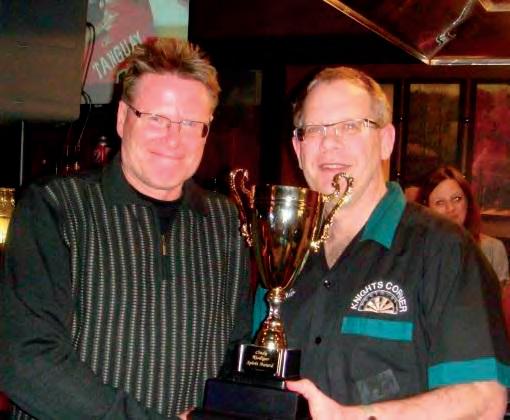
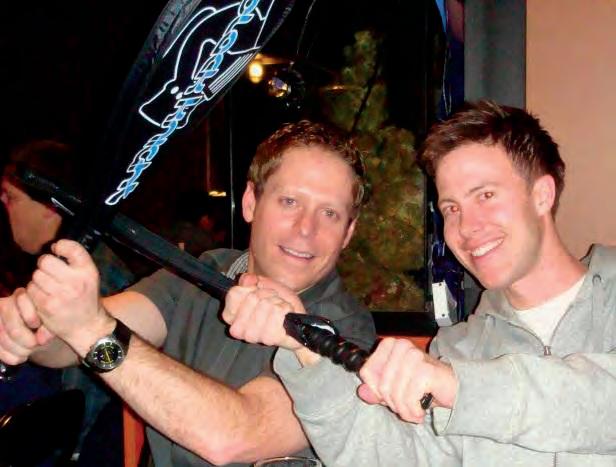
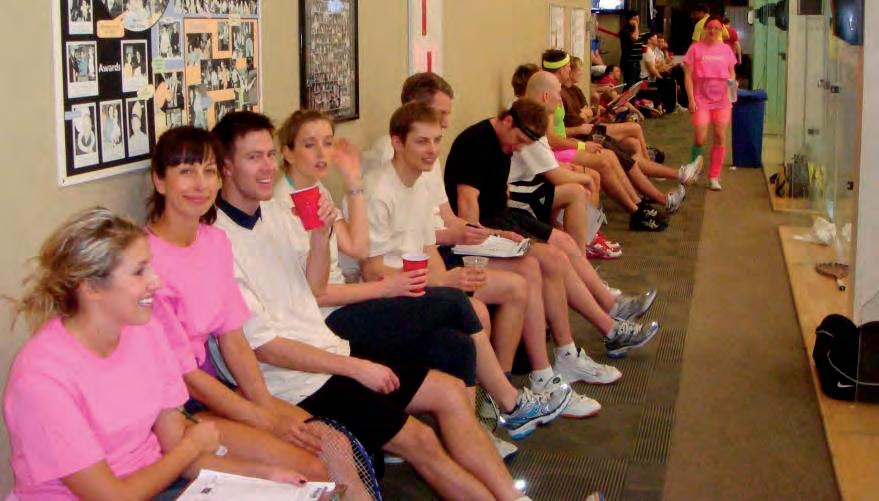

diVision taLKs STRUCTURAL DIVISION
3D seismic imaging over two structurally complex surveys in TAL, Pakistan
SPEAKERS
r .W. ve strum, Thrust Belt Imaging
v. D olgov, Thrust Belt Imaging
G.Wittmann, MOL Hungarian Oil and Gas
J. m . G ittins, Thrust Belt Imaging
12 noon to 1pm thursday, December 1, 2011
l ocation: Conference Centre room A, +30 level, Western Canadian Place (Husky e nergy), 707-8th Avenue S.W.
In a tectonically complex area of northwest Pakistan, MOL Pakistan and its partners acquired two 3D seismic surveys. Extreme topography led to irregular shooting geometry. varied surface access over this terrain required a mix of vibroseis and dynamite source types to maximize subsurface coverage. With the combination of difficult surface conditions over a structurally complex subsurface, the data processing and merging of these two surveys required close attention to detail throughout the processing sequence, and we had to rely on the most robust algorithms in the data-processing toolkit. There was no single technology that stood out in the processing, but careful attention to details in the application of the fundamental processes created a readily interpretable seismic volume.
The project area is on the Kohat Plateau of northern Pakistan. The regional structures are three-dimensional in nature resulting from transpressional forces in the collision zone between the Eurasia and India plates. In addition to compressional and transpressional tectonics, structures are influenced by the presence of ductile salt and clay diapir systems. Figure 1 shows the project area in the context of its geopolitical and regional tectonic setting. From the shaded relief, one may observe the mountain-front setting with significant ranges to the north and west of the project area that result from the multiple tectonic forces. Also interesting to note is the extensiveness of the mountainous terrain in the region as a whole. There may be many
Sponsored by
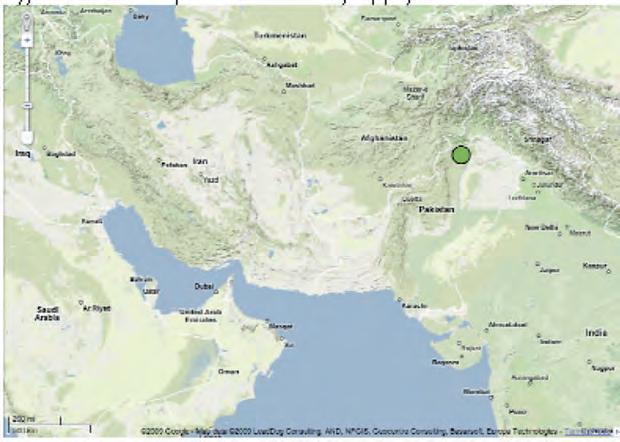
exploration areas throughout the region of this map where one may apply what we learned on this project.
MOL Pakistan contracted TBI to process and merge two 3D seismic surveys located in Exploration Block TAL in NWFP Province of Pakistan. The main aim of the project was to get a more detailed structural image at the reservoir level. The problems to overcome in this project area include:
• Complex thrust tectonics,
• Weathering and elevation corrections,
• Shot-generated noise,
• Irregular shooting geometry from rough terrain and surface conditions,
• Merging of two oblique surveys with multiple source types.
The problems listed above are typical to thrust-belt surveys. We took a toolbox approach to solving each problem as it arose, using a combination of recently developed technology and fundamental processes established by generations of trial-anderror in foothills exploration. Prestack time migration (PSTM) from rough topography is an example of a robust, well established technology that overcomes difficulties resulting from complex thrust tectonics and rough topography, as long as velocities and statics are managed appropriately. In this example, the new technology needed for the PSTM is visualization of 3D prestack-timemigration velocity analysis. In processing 3D seismic data from this tectonically complex area, no single technology stood out as the “magic bullet” to improve the image, but
careful attention to details in the application of the fundamental processes created a readily interpretable seismic volume.
BIOGRAPHY
Rob received a B.Sc., Geophysics (1992) from the University of Alberta, and M.Sc. (1994) and Ph.D. (2003) degrees from the University of Calgary. He initiated foothills anisotropic depth migration at Shell in 1996, Kelman in 1997, and at Veritas in 2001.
Rob’s depth-imaging project experience covers the Western Canada foothills, the Californian thrust belt, the South American Andes, and Central Asia. Recognition of Rob’s pioneering work in TTI anisotropic imaging includes the John Kendall Doctoral Thesis Award from the Faculty of Science at the University of Calgary, and the SEG’s J. Clarence Karcher Award for significant contributions to science by a young Geophysicist.
INFORMATION
Structural Division talks are monthly and cover a diversity of structural themes. Our Structural Division sponsors are Hef Petrophysical and Husky Energy. All are welcome and no registration is required. For additional information, to be placed on the Division e-mail list or to present a talk, please contact Darcie Greggs, Darcie. Greggs@huskyenergy.com.

Figure 1. Location of project area highlighted by the green circle. The shaded relief shows the rough topography of the region and evidence of significant compressional tectonic activity.
2011 CSPG TECHNICAL LUNCHEON COMMITTEE
The Technical Luncheon Committee went through a bit of transition in 2011 when, after 10 years as member and leader, Chris Seibel moved on to join the CSPG Executive as Services Director. We want to take this opportunity to extend a big thank you to Chris for his decade of service and contribution to the program (almost 180 technical luncheons!). Furthermore, at the conclusion of the 2011 luncheon season, Tim Bergen will leave the group and we would like to also thank him for his three years on the Committee. The 2012 Technical Luncheon Committee will be made up of Ryan Mohr (Nexen), Riona Freeman (Harvest Energy), Ryan Martin (ARC), Michael Webb (Suncor), and Rory Dunphy (Nexen). Although the Committee generally runs semi-autonomously, it falls under the portfolio of the CSPG Program Director. For 2011, this is Brett Norris and in 2012, Jon Noad will take over the helm.
The AAPG Distinguished Lecture Series is an important component of the Technical Luncheons and the CSPG would like to acknowledge the high quality of speakers and topics that they continue to make available to us as well as their cooperation with logistics to get these speakers to Calgary.
The 2011 Technical Luncheons series showcased a variety of speakers from around the world including Australia, the United States, and Canada. Audiences were treated to a variety of topics including new perspectives and ideas for successful exploration and development of resource plays in the Marcellus and Woodford shales as well as the Rocky Mountain Tight Gas play, a fascinating trip to China’s “Jurassic Park,” a look at source rocks in
ROCK SHOP
the Chukchi Sea in Alaska, transgressive sandstone reservoirs in the WCSB, and new insights into marginal marine systems from Drumheller. In September Dr. Nick Eyles, the leading scientist behind both of the CBC’s Geological Journey series, gave an inspiring talk about the adventure and challenges of making the T v series and the unique challenges of bringing geology to the living rooms of millions of Canadians. He did a fantastic job of reminding us all why we became geologists. 2011 concludes with talks on new applications of ichnology, a look at the Paskapoo Formation, and effective environmental management of the oil sands. The committee would like to thank all of our 2011 speakers for a successful season that relied entirely on their generosity in sharing their ideas, research, and valuable time with our membership.
In March of 2011 the CSPG successfully hosted its first joint technical luncheon in conjunction with the Saskatchewan Geological Survey in Regina. Gerry Reinson travelled with CSPG representatives to give a similar talk to the one he gave in Calgary at the AGM. The event proved to be very successful and was well received. The committee would like to thank Gerry for his contribution and also thank the Saskatchewan Geological Survey for their hospitality and support in making this a successful outreach event.
The 2012 schedule is nearly finalized with only a few remaining dates open. We are anticipating another strong year with a wide range of interesting topics aimed at enlightening and stimulating discussion and further investigation. These include climate change, the geology of shale gas, passive margin geology and salt tectonics of the
French Alps, geomechanics, resource plays in the Highlands of Scotland, details on the recent dinosaur feather discovery in Alberta, geology of the Scotian Shelf, organic matter in space, and much, much more. Stay tuned to the CSPG website and Reservoir for speaker topics, abstracts, and biographies.
The CSPG technical luncheons have been described by many as the “flagship” of the CSPG. They are a frequent opportunity for geologists to gain exposure to a variety of topics and ideas. Equally important, they are an opportunity to network with colleagues and build camaraderie within the society. We very much want this to be an event that members enjoy and look forward to participating in. If you have any feedback such as potential speakers, topics you would like to hear, or comments on how we can improve the delivery of the program, please contact one of the committee members listed below, the CSPG Program Director (Brett Norris for this year or Jon Noad in 2012) or any of the other CSPG Executive. We continue to strive for excellence and we appreciate any feedback from our membership.
Thank you for your continued support. Let’s do lunch!
Sincerely,
CSPG technical luncheon Committee
Ryan Mohr (ryan_mohr@nexeninc.com)
Riona Freeman (riona.freeman@harvestenergy.ca)
Ryan Martin (rcmartin@arcresources.com)
Michael Webb (mwebb@suncor.com)
Rory Dunphy (rory_dunphy@nexeninc.com)
Advertising
Norbert Alwast (cspgadvertising@cspg.org)
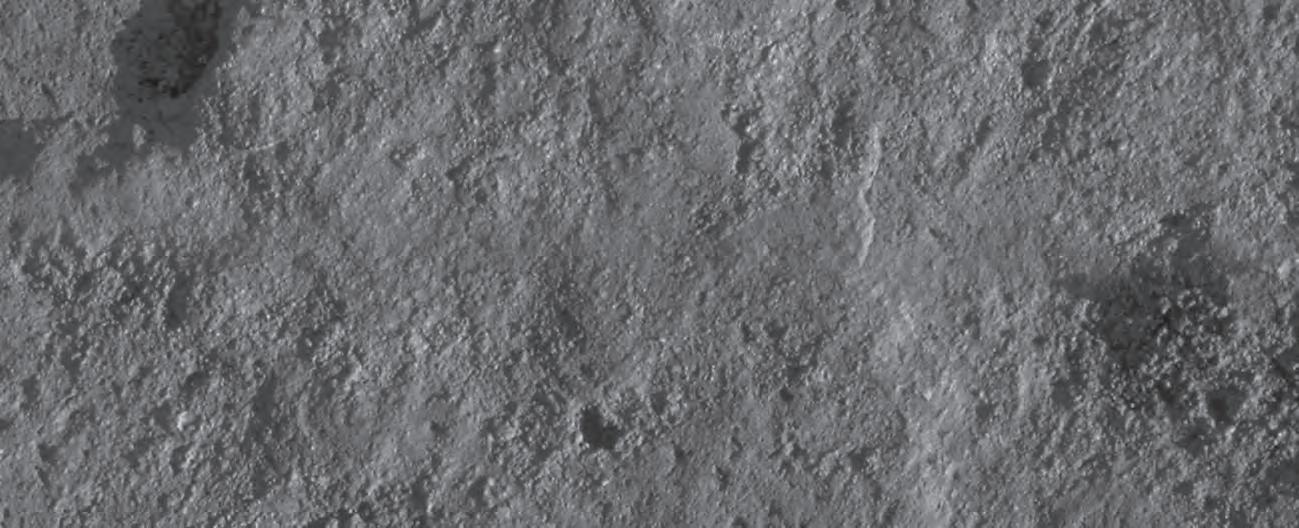
Fax403 264 1262 Cell403 819 2516



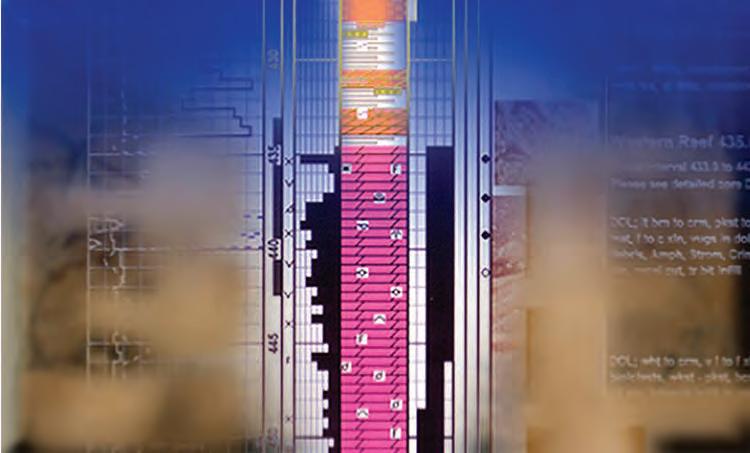



I N TO THE 2 2 ND C ENTURY
| By Tom Sneddon, Manager of Geoscience Affairs, APEGGA Calgary
It is the time of year when many people start to give serious thought about what is to come. New Year’s resolutions are an annual attempt at futurology that many of us indulge in as the snow drifts silently around the garden, and the soft lights of the Season of Indulgence twinkle from the neighbour’s roof lines and windows. Favourite beverage in hand, we let our minds and imaginations focus on what should be possible in 2012. Professional goals, private objectives, family plans, and so forth flit in and out of our mellow mood.
Where will the geology profession be over the next year, the next decade, and into the next century? Some practitioners tell me they think the whole profession is drifting into irrelevance. Others believe we are on the threshold of yet another revolution that will lead us into a new era of exploration and development of materials we only have a hazy understanding of right now. Have a quick look at the Periodic Table of the Elements, where all good prospecting projects begin. How many of those are currently being produced in Alberta or in Canada?
World society drives our business by demanding new goods and services that don’t fill our usual profile of iron, copper,
molybdenum, gold, silver, platinum, sulphur, nickel, and carbon. Take lithium for example. In 2007, there was one producer and production from that mine was not reported, but was likely in the range of 20 tons or so. World production was around 2,500 tons. Thanks to electric vehicles, cell phones, and portable computers, 2010 production was 110,000 tonnes, which the gurus at the UK metals research consultancy Roskill believe will double by 2020 (http://www.roskill. com/reports/minor-and-light-metals/ lithium). Quickly now, how much lithium carbonate, a common component of oilfield brines, is produced in Alberta? Have you been quietly mapping where the highest concentrations are? Have you been bugging the company engineers to find a cost-effective way of recovering the good stuff?
How about sourcing the Rare Earth Elements (REE) known to exist in coal ash and as a byproduct of oil sands mining? China decided a couple of years ago to stop exporting the stuff and produced an instant world-wide shortage of the basic raw materials for the electronics business. In 2009, the Canadian Minerals Yearbook reported no production in Canada (there is one modest Columbium mine near Chicoutimi in Quebec). The CBC reported on February 17, 2010 (http://www.cbc. ca/news/business/story/2010/02/12/frare-earth-rush.html) that situation was changing rapidly – but not in Alberta, although a few exploration permits for REE have been issued by Alberta Energy.
Titanium and zircon are being extracted from oil sands tailings by an Alberta public company, Titanium Corporation (TICTS x v ; http://www.titaniumcorporation. com/s/Home.asp). The company has recently completed its pre-commercial pilot milestone and expects to begin production in two to three years. It will also recover about 75% of the residual bitumen left behind by the main recovery operations at the host oil sands plant. TIC has shown dramatically that with some vision and persistence, geologists can find sources of dollars not only in undisturbed ground, but also in waste streams from other companies’ operations.
Old tailings ponds and piles can literally be gold mines. A Quebec colleague noticed that a lead/zinc mine that was abandoned in the 1920s after about 30 years of operation was in a similar terrain to a gold deposit he explored for a client. He sampled the tails and ran assays. The company that owned the mine didn’t realize their wastes ran two to three troy ounces per ton gold. The tailings are also a great supply of pre-milled magnetite that can be sold to companies with heavy media circuits in various industries. Custom milling of already mined product is a lot less expensive than processing run-ofmine material and he solved a significant environmental and health hazard for the town that surrounds the old mine. All it takes is the right phase of the commodity cycle and good economics.
Due regard for the environment can not only be a professional obligation, it can also be profitable. All it takes is a little daydreaming and some old geological reports.
Dreaming outside the professional box is one thing – obtaining the skills necessary to operate outside the box is quite another. Continuing Professional Development (CPD) goals can spin out of one’s year-end reverie. Just because you are a petroleum geologist today (and have been for some years) doesn’t mean you can’t expand your competence into mining, non-metallic minerals, or environmental work. Focussed study, a few courses, field trips and perhaps membership in a nonpetroleum professional technical society (in addition to CSPG membership, of course) can earn CPD hours and provide further insight into what you are already doing, or a portal into a new career.
Give it a shot – you never know – maybe you have the “Right Stuff” to start another version of Titanium Corporation. It could all start one quiet winter evening, in your own living room.



They can copy us. They just can’t be us. If imitation is the sincerest form of flattery, we’re one flattered group. Drawing on a quarter century of oil and gas experience, geoLOGIC continues to be the market leader in data, software solutions and support. And while we lead the way, our competitors desperately create parity products, sometimes years after us. For details on how geoLOGIC leads the way, visit www.geoLOGIC.com/leader
Leading the way with customer-driven data, integrated software and services for your upstream decision-making needs.
geoSCOUT | gDC | petroCUBE at www.geoLOGIC.com
UNDERSTANDING RESERVES AND RESOURCES Part 4 – Deterministic and Probabilistic Reserve Estimates
| By Colin Yeo, P.Geol. and Lionel Derochie, P.Eng.
R I SK I S N O T THE S A ME AS U NC ERTAINTY
T he concepts of risk and uncertainty are sometimes used interchangeably, however, when it comes to estimating reserves they are completely different matters. Risk generally refers to the chance of a loss and is usually associated with an impending decision. As such, risk is not an issue when it comes to reserves because, by definition, reserves have already been discovered and are economic to produce. Uncertainty, on the other hand, is a concept used to describe that there is a range of possible outcomes for any reserves estimate. In other words, uncertainty can be thought of as the difference between the reserve volume that is estimated from time to time for a given well and the actual volume that the well eventually ends up producing, even though the latter is never known until the well is at the end of its
producing life. While there is no risk that a reserve is present, there is uncertainty as to how big the reserve actually is.
Uncertainty in reserve estimation arises from error and bias. Error, in this case, is caused by limited or inaccurate data and not by mistakes. Bias is a deviation from the true value and is usually introduced by either optimism or pessimism on the part of the evaluator in the data sampling and selection process and, as such, can result in a wholesale shift in values.
Other sources of uncertainty arise from technical, economic, and timing issues. It is difficult to be accurate in calculating hydrocarbon pore volumes when there is limited well control and/or no core data, just like it is also difficult to accurately forecast production using decline curve analysis when a well has only been on-
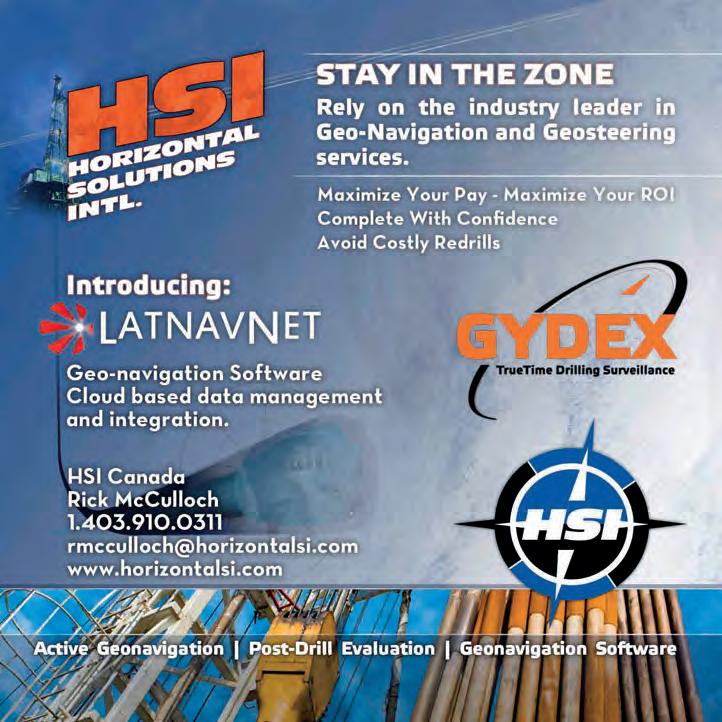
stream for a short time. Uncertainty can also be introduced through variations in product prices, operating costs, royalties, and taxes that result from changes in market forces and/or legal, regulatory, and environmental conditions.
While there is no risk that a reserve exists, there can be a great deal of uncertainty regarding its size and this uncertainty only goes away when the entity reaches the end of its producing life.
E STIMATING R ES ERVES :
DE TERMINISTIC AND
PROBABILISTIC M E THODS
T he deterministic method of estimating reserves volumetrically uses only one value for each parameter in the hydrocarbon-inplace calculation and therefore, assumes that the value selected applies across the entire drainage area. The value for each parameter used in the calculation is usually represented by an average of a larger range of values that are actually observed from the well itself or a collection of wells in the immediate producing area. Choosing the “right” or most appropriate value is often left to the discretion and experience of the evaluator.
In the last article, deterministic reserve calculations were completed for the two wells in Section 26, in that a single value for drainage area, net pay, porosity, initial gas saturation, pressure, temperature, gas compressibility, and recovery factor were used in the original-gas-in-place (OGIP) and recoverable-gas-in-place (RGIP) calculations. In this exercise, a single value of porosity was selected as a cutoff to define net pay and then the average porosity over the net pay interval was determined. Different porosity cut-offs were used to estimate the three levels of reserves, that being the proven (1P), the proven plus probable (2P), and the proven plus probable plus possible (3P) reserves. The higher porosity cutoffs resulted in thinner net pays but yielded higher average porosities. The initial gas saturation was varied for each of the three levels of reserves to more accurately represent the reserves volumes for the conservative (1P), best estimate (2P), and optimistic
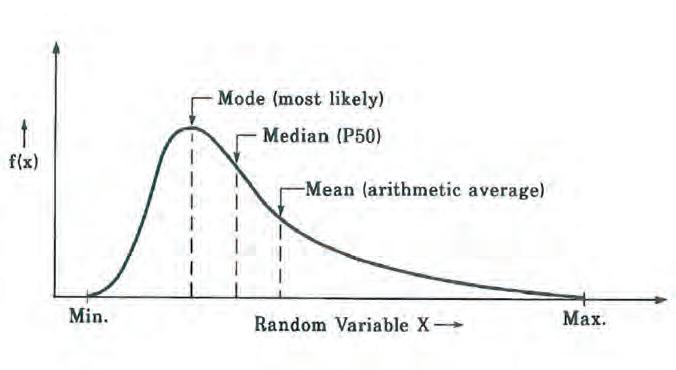
(3P) scenarios. Other parameters in the gas-in-place calculation such as drainage area, pressure, temperature, and gas compressibility were kept constant.
By examining the average values for net pay, porosity, and initial gas saturation for a collection of wells that surround Section 26, it becomes evident that there is significant variation in the rock properties as you move away from the wells in Section 26.
The variation that is observed from well to well is a reflection of how the rock properties can change over short distances and, in itself, introduces the element of uncertainty for any deterministic reserves calculation. The variations that are observed from well to well would imply that if it were possible to actually measure the rock properties at every point across Section 26, the values for the various parameters in the volume equation would vary from point to point and would most likely not average out to the single point values that were used in the deterministic calculations.
Recognizing that there is variation in the rock properties from well to well, the evaluator could elect to use a probabilistic method for estimating the reserves for the wells in Section 26. This is done by evaluating a group of wells that include the wells in Section 26. This method serves to incorporate the variations that are being observed at offsetting wells and requires that the input parameters be
the group will fall below that value and half will fall above. As will be explained below, this plot can be used to define the proven (1P), the proven plus probable (2P), and the proven plus probable plus possible (3P) reserve categories.
For any given distribution plot, there are three measures of central tendency that are used to describe the distribution and by which one distribution can be compared to another. These are shown in Figure 1. The mean is the arithmetic average of the data set. The median value separates the distribution set into two equal parts and, by definition, is equivalent to the P50 value. The mode is the value that occurs most frequently. The dispersion of the distribution can be described by the magnitude of the range (highest and lowest values) and the standard deviation. A distribution can also be plotted on a cumulative probability distribution curve in ascending order and can then be divided
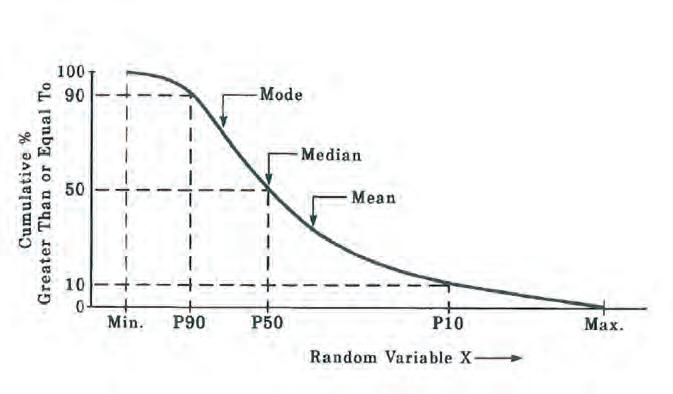
described using probability distribution plots. As such, a large number of reserve estimates are calculated using a Monte Carlo Simulation that randomly selects values for each input parameter from their respective distributions. From this, an ultimate reserves probability distribution plot is generated and applies equally to all of the wells in the group that were used in the analysis. The usual practice in this case is to assign the P50 reserves to all the wells recognizing that half of the wells in
into percentiles as shown in Figure 2. At the 90th percentile (P90), there is a 90% probability that a value of equal or greater magnitude will be encountered. Similarly, there is a 50% and 10% probability of an equal or greater value at the 50th (P50) and 10th (P10) percentiles, respectively. Figure 3 shows the cumulative probability distribution plots for net pay, porosity, and water saturation that were used in the Monte Carlo simulator.
(Continued on page 20...)
Figure 1. This diagram is an example of a lognormal distribution. The “Random Variable X” could be net pay, porosity, or water saturation. The three measures of central tendency are also shown (after COGEH, 2007).
Figure 2. The lognormal distribution shown in Figure 1 is plotted as a cumulative probability distribution curve that shows the full range of possible outcomes (after COGEH, 2007).
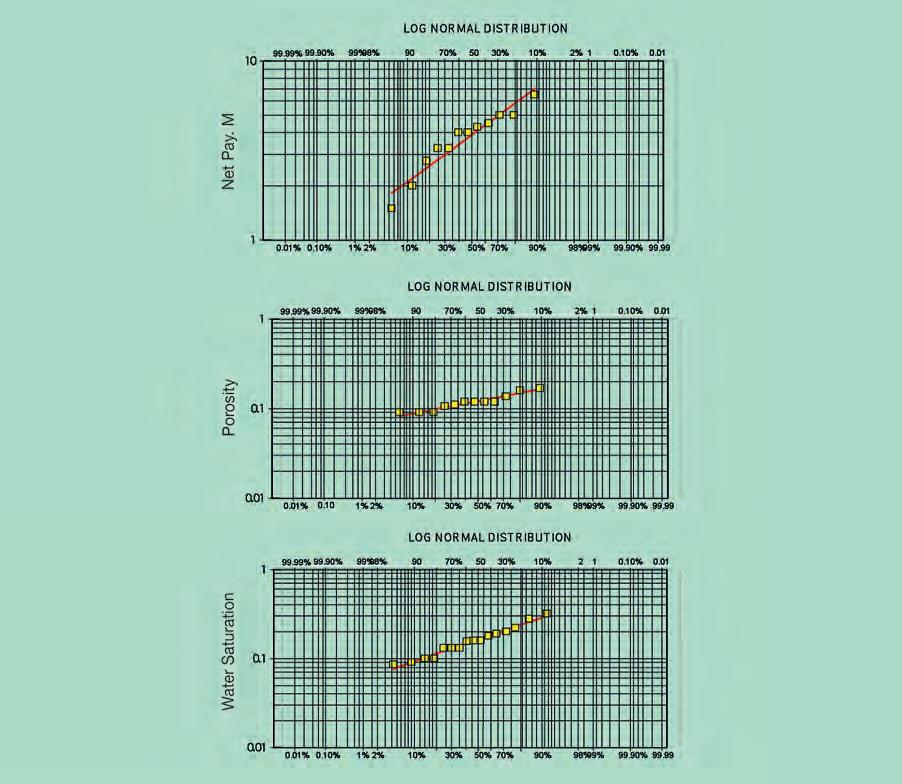
(...Continued from page 19)
Using a probability distribution to incorporate the full range of data that is observed in the area rather than describing a parameter with a single value is a better way to handle the fact there is uncertainty. Some parameters may actually be interdependent and that should be considered in the simulation (i.e., porosity and gas saturation, porosity, and recovery factor). Software applications allow the practitioner to set the level of co-dependence when running simulations.
Figure 4 is the distribution of estimated reserves from a Monte Carlo simulation using data from a collection of wells in and around Section 26. This is a lognormal distribution that has a mean value of 7.8 Bcf, a median value of 6.7 Bcf, and a mode value of about 5 Bcf. The median value of 6.7 Bcf is also the P50 (2P) reserve value whereas the P90 (1P) value is 3.1 Bcf
and the P10 (3P) value is 14.3 Bcf (3P). In summary, this distribution plot would suggest that there is 90% probability that all the wells in the group will reach or exceed 3.1 Bcf. It also indicates that each well in the group has a 50% chance of reaching or exceeding the P50 value of 6.7 Bcf. In other words, half of the wells will fall below 6.7 Bcf value and half will fall above. The deterministic 1P, 2P, and 3P values of 8.7, 9.7, and 11.4 Bcf that were calculated for the Section 26 wells are also plotted on the histogram for comparison. It is immediately apparent that the deterministic reserve estimates for the Section 26 wells are higher than the probabilistic P50 values.
Originally, the hypothesis was that the variability in net pay, porosity, and water saturation observed in the offset wells would also apply to Section 26. It turned out however that those offset wells
had thinner net pay, lower porosity, or lower gas saturation, or a combination of all three, than the two wells drilled in Section 26. As a result, the simulation (using those lower values from the offset wells) predicted lower reserve values for the Section 26 wells in comparison to the deterministic estimates that were calculated using single values based on averaging the two wells on the Section.
DE TERMINISTIC R ES ERVES ARE
A S U BSET OF PR OBABILISTIC R ES ERVES
Deterministic reserve evaluations consider only three scenarios: proven, proven plus probable, and proven plus probable plus possible. The values used for input parameters and the prediction of future performance are chosen at the discretion of the evaluator. Probabilistic reserve evaluations use the full range of input data and can incorporate additional information
Figure 3. Values for three parameters of the original gas-in-place equation are plotted on a cumulative lognormal probability graph. Values for each parameter form a straight line indicating that the distribution is lognormal. This lognormal distribution will be sampled in a Monte Carlo simulation.
(data) to influence the type of distribution and, therefore, the deterministic reserve will always be a subset of the probabilistic reserve distribution generated by Monte Carlo simulation. As was seen in Figure 4, the spread of reserve estimates using a Monte Carlo simulator was quite large but did incorporate the deterministic estimates. The P50 (2P) value of 6.74 Bcf for the distribution is less than the proven plus probable (2P) value of 9.74 Bcf using the deterministic method but the range of possible reserve outcomes predicted by the simulation did include the 9.74 Bcf estimated deterministically even though the probability of achieving that value was low.
S U MMARY
W hile probabilistic reserve assessment
is useful and is a better way to handle the uncertainty associated with calculating reserve estimates, it does take considerable effort to gather, condition, and load the information. In reality, decline analysis, material balance, and reservoir simulation provide a better estimate of remaining reserves while volumetric estimates anchor the in-place volumes and are usually used when production data is limited. However, in resource plays, OGIP estimates, compared with EUR established from production decline analysis, are very important in helping to determine recovery factors and setting the number of wells that could be drilled within the accumulation. When faced with limited and highly variable data, probabilistic reserve (or resource) estimates showing
the full range of possibilities may be more appropriate.
R E FERENCES
S ociety of Petroleum Engineers. 2001. Guidelines for the Evaluation of Petroleum Reserves and Resources. Society of Petroleum Engineers, Richardson, Texas.
Society of Petroleum Evaluation Engineers (Calgary Chapter). 2007. Canadian Oil and Gas Evaluation Handbook. Society of Petroleum Evaluation Engineers (Calgary Chapter) and Canadian Institute of Mining, Metallurgy & Petroleum (Petroleum Society), Calgary, Alberta.
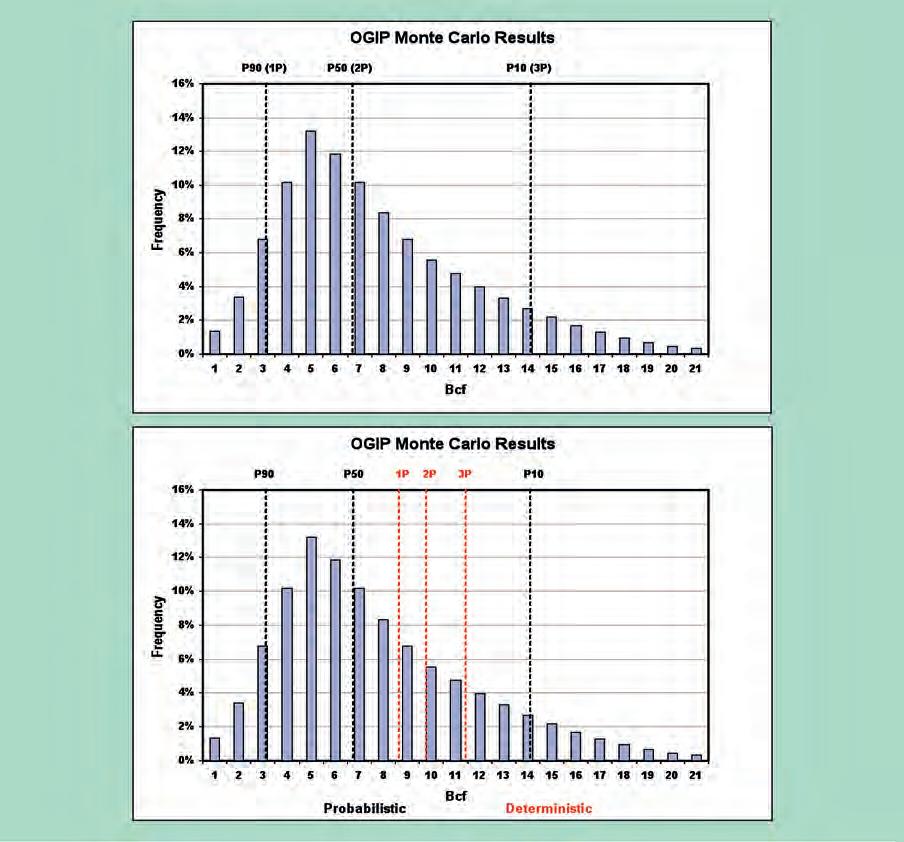
Figure 4. Distribution of reserve estimates from a Monte Carlo simulation. Deterministic estimates all fall between the probabilistic 2P (P50) and 3P (P10) values. The probabilistic estimate is lower as offsetting wells are of lower reservoir quality.

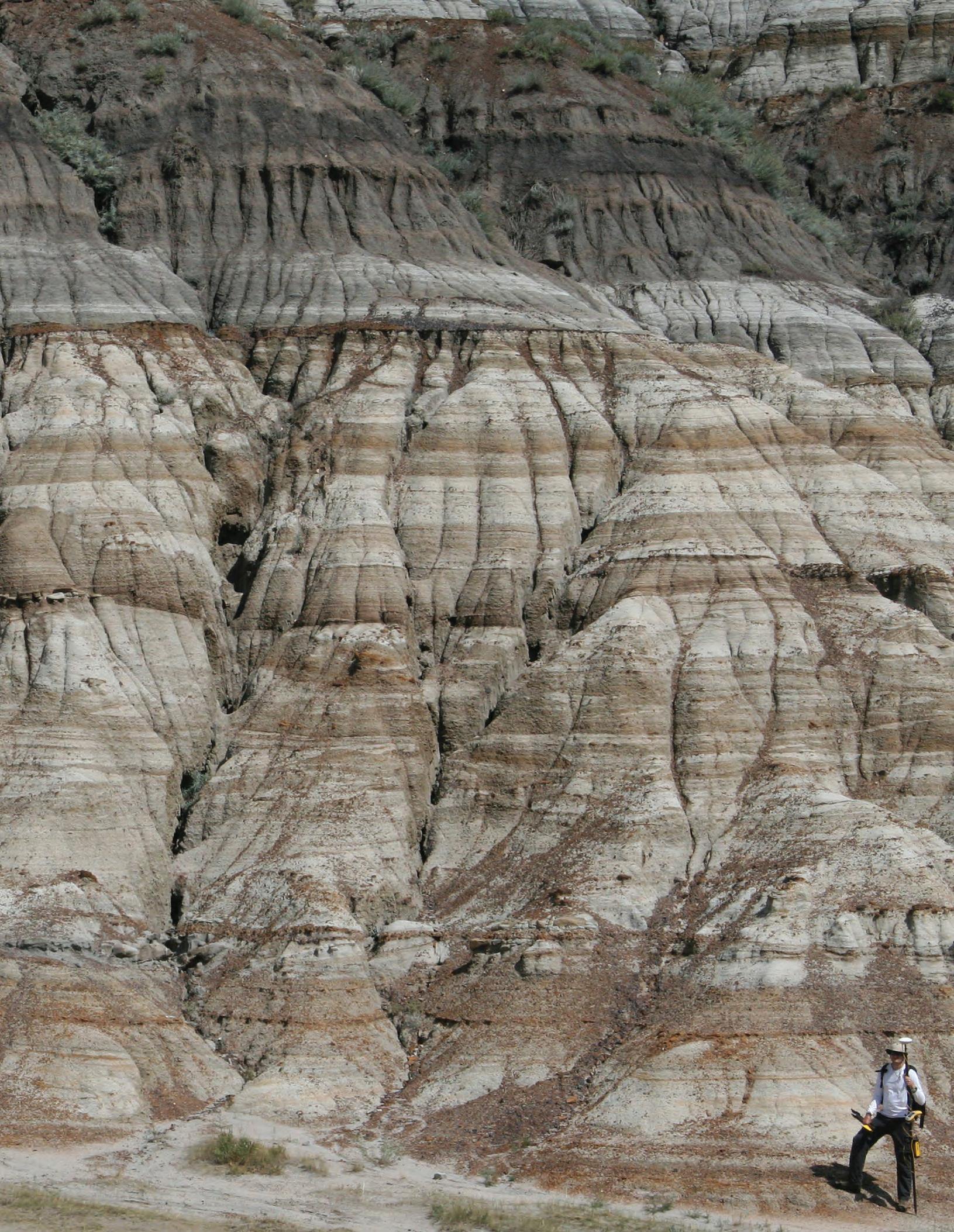
RESERVOIR ODDS AND ENDS REDUX
| By Ben McKenzie, Reservoir Technical Editor
This is an updated version of an article we ran a few years ago in the Reservoir. Because of the Reservoir’s importance to the Society, it is useful to occasionally review what it tries to do and how it is done.
PURPOSE OF THE R ESERVOIR
First off, what is the Reservoir? Initially, it was an outgrowth of the Society’s informal newsletter. In the words of Wayne Shepheard, (1st Reservoir Editor, 1974-1977), “We wanted to tap into the reservoir of talent in the Society to bring new ideas and contributions to the publication, to use the pages of the Reservoir to voice concerns and make comments, both positive and negative, on the affairs of the Society and on the profession in general.” (Shepheard, et al., 2004).
While the physical format of the Reservoir has changed dramatically over the years, the basic purpose, as expressed above, has stayed fairly consistent. In addition to those goals, the Reservoir is a primary vehicle for the Society to publicize its many activities and to promote our profession (the website and e-newsletter are other methods of increasing importance).
Over the past few years, there have been two significant trends developing that will have an increasing impact on what the Society does and how it is perceived by the public. The first is the changing nature of our jobs. For many decades, it was assumed that people entering the petroleum industry would receive additional training and mentoring on the job. This is not so common now, hence the focus by the CSPG on increasing the Society’s role in continuing education. The Reservoir plays a part in this goal by publishing technology-related articles to inform and educate our readers.
Also, the petroleum industry has never enjoyed much general public popularity. Current attention on climate change, water use, royalties, etc. is increasingly putting the industry in the public eye – usually in a negative light. The Society recognizes that its members have varied opinions and for that reason has an ongoing policy of avoiding political stances. For instance, we did not render an opinion on the Royalty Review Report or royalty trust taxation and we stayed fairly non-committal in the climate change debate. These are issues where the CSPG membership has a divided
opinion and the emotion on both sides can run high. Emotional rhetoric does no good, but neither does silence. By drawing from the vast pool of members’ knowledge, the Reservoir can and should help correct misconceptions and publicize benefits the public derives from the petroleum industry.
T Y PES OF ARTICLES SOUGHT
In addition to the committee reports, luncheon abstracts, etc. that serve to report on the Society’s activities, we look for both technical and non-technical material to publish. The non-technical articles could be a report on volunteer activity by a member, a company’s support to a charitable cause, a photo-mosaic of a trip, a book review – anything that would reasonably serve to promote our members and profession.
Subject matter for the technical articles should stay within the broad category of petroleum geology as the vast majority of our readers are geologists in the oil and gas industry. While there is obviously overlap in the various disciplines, the more narrowly focused,
(Continued on page 24...)

Tuesday, December 6, 2011
Social Networking 10:30 –11:30 am
Technical Luncheon11:30 –1:00 pm

Book your Corporate Table TODAY

This is a sellout social event that you don’t want to miss! Tickets are available at www.CSPG.org
technical aspects of geophysics, petrophysics, mining geology, etc. are more appropriately handled by the relevant technical association. Exceptions to this are the extended technical articles and series that serve as an introduction to topics related to petroleum geology.
We are also trying to expand the Reservoir to include more information from across Canada and from the universities. These articles could deal with, for example, preview/review articles on local conferences; status of ongoing research; condensed versions of student theses, research papers, etc.; or articles on significant events at any particular university (e.g., the start of a new department, major project, or industry funding).
As well, we welcome technical articles from commercial firms that describe how a new product does a better job, case studies, etc. – the main consideration being that it doesn’t cross the line between being a technical article and overt advertising.
While we are open to a wide variety of topics and styles of writing, we cannot, to state the obvious, use anything that is defamatory in nature or in need of extensive work in order to bring it up to commonly accepted publication standards. This is discussed further below.
R EqUIREMENTS FOR PRINTING
After an article or topic has been submitted to the Reservoir and approved for publication, it goes into the production process. What we need in order to print an article is fairly simple – the text should be in either plain text or Word document digital format and any illustrations should be as individual 300dpi TIF files. References should follow the format used in the Bulletin of Canadian Petroleum Geology. The files should be e-mailed to our Coordinating Editor, Caitlin Young (caitlin. young@cspg.org).
Typically, a technical article tends to be in the two- to four-page range. A full page of text is about 1,100 words, but with illustrations (always encouraged) and other layout items, an article page will probably consist of about 500-750 words. Layout is handled by our printer. Depending on the complexity of the material, a PDF or a formatted file (e.g., RTF Word document) of the article may be needed. This is particularly true in cases where there are formulas and symbols. If an individual article runs a bit long, we can arrange to carry it over to the next issue. We have also run a number of more in-depth topics as article series, which have been well received by our readers.
Articles should be submitted by the 23rd of
the month, two months prior to publication date (e.g., articles for the June issue have to be submitted by April 23rd). Two months sounds like a long time, but in reality, the publication cycle is only about four weeks. In that time, the printer does the initial layout, three drafts and a final proof are issued for editing, and the magazine is printed and delivered for the first of the month. In rare instances, we can accept material later in the publication cycle. With lead time, we can target a particular month.
Production of the Reservoir is a significant undertaking for the CSPG, both in time and money. We realize that much of its content is provided by volunteers with time limitations – but from the production point of view, missed deadlines or last-minute changes or cancellations cause problems.
Once in a while, we have to postpone an article to a later issue of the Reservoir. This is because our printing process requires that the page count be in 8-page multiples. We realize the authors affected may have worked hard to meet our deadline and are disappointed with such delays. We try to avoid this as much as possible.
EDITING
The Reservoir is not a peer-reviewed publication, but we do have a technical editor. Reviewing and editing are similar but are done to different degrees and for different purposes. The basic distinction is that the reviewer (frequently anonymous) is expected to have in-depth knowledge of the subject being discussed and will examine an article for technical accuracy, clarity, and consistency. Any comments about those areas, as well as spelling, grammar, style, etc., are relayed to the author for consideration. It is up to the author to address those comments. If the reviewer has significant concerns which are not rectified, then the article may be turned down for publication.
The editor has several duties, first of which is determining whether an article is appropriate for the target audience. Passing that hurdle, the editor will also deal with technical accuracy, clarity, spelling, etc. However, unlike the reviewer, the editor has the right to make minor changes without further input from the author. Usually, these changes deal with mechanical aspects of publishing such as language edits, printing format, and layout. Where there is a question about content or if a significant portion of the article has to be cut because of space restrictions, then the editor may discuss it with the author and / or another reviewer.
Speaking for myself, I do read everything that goes into the magazine. No, I’m not an
expert on all topics, but I try to ensure that the information is readable, consistent, and has no obvious errors (and yes, unfortunately, some do slip through). As well, Caitlin Young (Publications Coordinator) in the CSPG office contributes significantly to the organizational and editing process. Also, Brenda Johnston, who handles the magazine’s layout at Sundog Printing, is very good at helping us make it presentable.
STYLE
Style is a wonderful thing – it can cover a wide variety of apparent inconsistencies (the spelling differences between British English and American English for example). Because material submitted to the Reservoir comes from dozens of authors with a wide range of experience and educational backgrounds and because of our time constraints, we are not as concerned about making sure that each article matches a set style. This also helps set a somewhat informal tone to the publication that we hope will foster a sense of ownership among our members. That said, we do have a few guidelines we follow, which hopefully aid in our goals of clarity and readability.
OUR E X PECTATIONS
Our technical article requirements are not as rigorous as the Bulletin (for example) since the Reservoir is not a peer-reviewed publication. This is partly because of the publishing time constraints we have, but mainly to allow inclusion of works that are speculative or in progress. Hopefully, such articles will spark discussion and increase communication to the benefit of all concerned.
Although I’ve commented repeatedly about the Reservoir’s informal nature and desire to publish developing ideas for discussion purposes, the Reservoir is still a reasonably high-profile, science-oriented publication. As such, it is up to the author to ensure that his or her material is accurate, up-to-date, and properly referenced.
We are willing, and have on occasion, provided some assistance in getting articles ready for printing. This can take the form of extensive editing where the author’s first language is not English, converting typewritten text to digital, and drafting illustrations. This work is not part of the Reservoir’s mandate and is done by volunteers when available. Potential contributors should contact the Technical Editor if they need help along these lines. Remember, we want your article to look good too.
COPYRIGHT
As stated in the Reservoir and on the website, contents in the Reservoir may not
be reproduced either in part or in full without the consent of the publisher. Put simply, this is a typical blanket statement used in publishing and is not meant to impede the dissemination of an idea but rather to ensure credit is given and that the material is not used for unintended purposes. You, as an author, have the right to your original work. We, as publisher, have the right to the finished product we produce.
MEMORIALS / K EEPING T R ACK
Occasionally, there has been some discussion as to whether memorials are better placed in the Bulletin or in the Reservoir. Our current policy is that a small notice of passing and photo is reasonable to include in the Reservoir, but that a more extensive writeup would be better placed in the Bulletin.
Likewise, our profession does have a high degree of mobility associated with it and we will publish where people have gone when provided with the information.
A DV ERTISING
Reality intrudes – no advertising, no magazine. We try to ensure that we have enough advertising each issue to cover Reservoir costs. Related here is the question that occasionally arises about the need for the plastic wrapper
in which the Reservoir is mailed. Canada Post requires a wrapper for issues sent to outof-country subscribers. As well, it is needed whenever we include supplements such as the calendar. So while the extra plastic is necessary, the end recipient can and should recycle it.
DENY, DENY, DENY
Unless specifically identified otherwise, no official endorsement or sponsorship by the CSPG is implied for any advertisement or article that appears in the Reservoir.
L A ST BUT NOT L E AST
A s indicated in this month's Executive Comment, we are always looking for technical content and for people to help out with the Reservoir. This could be as a correspondent for local activities or university liaison, a book reviewer, roving reporter, technical series contributor, etc. Give us a call – share your knowledge – get involved.
CONTACTS:
The Reservoir is under the Communications Director’s portfolio. Currently, that is:
Communications Director
Jim Barclay, ConocoPhillips
Email: Jim.E.Barclay@conocophillips.com
Tel: (403) 532-3889
GeoEdges Inc.
GeoScout and other applications
Assistant Communications Director
Stephen M. Hubbard, Assistant Professor
Department of Geoscience, University of Calgary
Tel: (403) 220-6236
Email: shubbard@ucalgary.ca
As well, the production aspects are handled by:
technical editor
Ben McKenzie, Tarheel Exploration
Tel: 403-277-4496
Email: bjmck@live.com
technical editor
Colin Yeo, EnCana Corporation
Tel: (403) 645-7724
Email: colin.yeo@encana.com
Coordinating editor / Advertising
Caitlin Young Tel: 403-513-1230
Email: caitlin.young@cspg.org
R EFERENCE
Shepheard, W. W., et al., 2004. Editor(ial) Reviews in Reservoir 30th Anniversary Issue 1974-2004. Canadian Society of Petroleum Geologists, Reservoir, vol. 31, Issue 11, p. 25.
for information contact: Joel Harding at 403 870 8122 email joelharding@geoedges.com www.geoedges.com
Western Canada: Slave Point, Swan Hills, Leduc, Grosmont, Jean Marie, Horn River Shales, Elkton, Shunda, Pekisko, Banff, Mississippian subcrops and anhydrite barriers in SE Sask., Bakken, Three Forks, Montney, Halfway, Charlie Lake, Rock Creek, Shaunavon, BQ/Gething, Bluesky, Glauconitic, Lloyd, Sparky, Colony, Viking, Cardium, Horseshoe Canyon and Mannville CBM, Oilsands Areas, Outcrops
US Rockies & Williston: Red River, Mississippian subcrops & anhydrite barriers (Bluell, Sherwood, Rival, etc), Bakken, Three Forks, Cutbank, Sunburst, Tyler, Heath, Muddy, Dakota, Sussex, Shannon, Parkman, Almond, Lewis, Frontier, Niobrara, Mesaverde shorelines, Minnelusa, Gothic, Hovenweep, Ismay, Desert Creek, Field Outlines, Outcrops
North American Shales: Shale plays characterized by O&G fields, formation limit, outcrop, subcrop, structure, isopach, maturity, stratigraphic cross-sections. Includes: Marcellus, Rhinestreet, Huron, New Albany, Antrim, Utica-Collingwood, Barnett, Eagleford, Niobrara, Gothic, Hovenweep, Mowry, Bakken, Three Forks, Monterey, Montney, Horn River, Colorado
Appalachian Basin: PreCambrian, Trenton, Utica-Collingwood, Medina-Clinton, Tuscarora, Marcellus, Onondaga Structure, Geneseo, Huron, Antrim, New Albny, Rhinestreet, Sonyea, Cleveland, Venango, Bradford, Elk, Berea, Weir, Big Injun, Formation limits, Outcrops, Allegheny Thrust, Cincinatti Arch, Field outlines
Deliverables include:
-Shapefiles and AccuMap map features -hard copy maps, manual, pdf cross-sections -Petra Thematic Map projects, GeoGraphix projects, ArcView map and layers files
-bi-annual updates and additions to mapping -technical support
C L OSING THE G A P ON THE GUSSOw 2 011
| By David Garner, Statoil Canada Ltd, and Gussow Chair
The Gussow Geoscience Conference held October 3rd to 5th in Banff attracted 134 participants. The theme, Advances in Applied Geomodeling for Hydrocarbon ReservoirsClosing the Gap, drew a strong and diverse gathering to the Banff Centre. Of the attendees, 110 were from Canada and 24 were from other countries as shown in the adjacent graph.
There were 28 speakers and 11 posters. Half of the oral presenters were from outside of Canada, traveling from all of the countries listed.
Geomodeling is an internationally applied technical discipline with a solid base of practice in Canada. In the last decade alone, there has been a tremendous growth in the number of people practicing geomodeling This Gussow conference was convened to gather practitioners, software vendors, and geostatisticians to present and discuss materials to help focus the participants on the path to ensure the future success of the geomodeling community. This was the first
international meeting to focus specifically on the entire subsurface aspects of geomodeling as the central theme.
The meeting’s format was experimental by mixing designated vendor talks as part of the oral technical sessions. By doing so, the vendor presentation’s content and style departed from the convention floor pitch, thus delivering many informative workflow applications, case studies, and insights into views on the future directions of the industry. Another addition to the meeting was to have booth areas for vendors and sponsors. A key fact of planning the meeting for vendors was that the booths were staffed by senior technical people from the various participant companies, thus facilitating healthy workflow discussions.
The meeting schedule included breaks to allow ample time for participants to visit posters, booths, or have networking face time. A highlight of the schedule was the two discussion periods at the ends of days 2 and 3. Each of the preceding day’s presentations
was touched upon to ensure everyone got their questions out in the open. As was expected, lively discussion was generated.
As a follow-up to the meeting, a call for papers was sent out to speakers for papers for a special edition of the Bulletin of Canadian Petroleum Geology.
Below are some comments received about the meeting:
Gilles Bourgault of Computer Modeling Group Ltd, Calgary, wrote:
“…the Gussow conference was very well done. Not too small and not too big, combining university researchers, oil / consulting companies, and software vendors together has shown to be a good formula, especially with the forums open for discussion at the end of each day. You have created a good environment for very interesting exchanges where everyone could benefit.
I hope to see a repeat, maybe every other year.”
A Resounding Success:
134 delegates from around the world
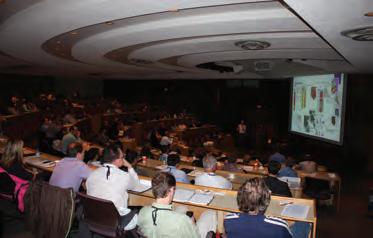
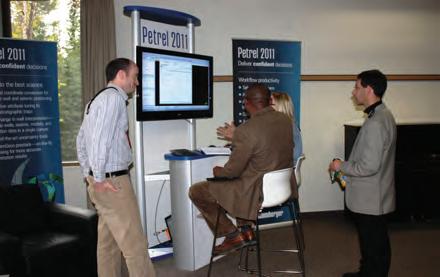
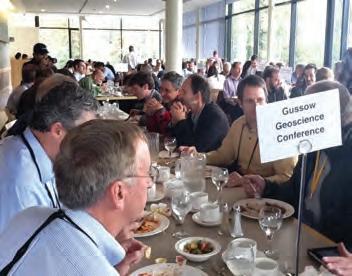
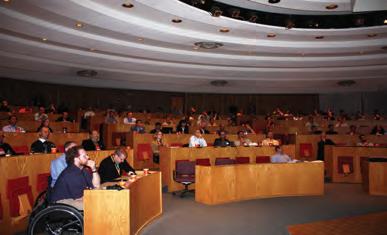
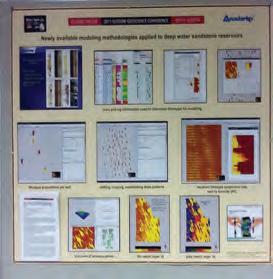
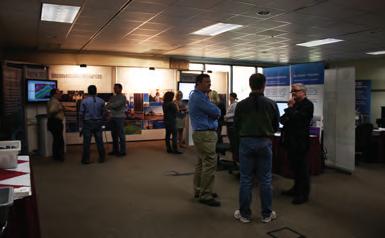
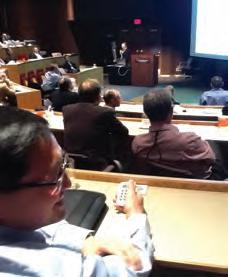
Richard Drumheller of Anadarko Petroleum Corp., Houston, wrote:
“Thanks very much for convening this conference and for allowing me to participate!
I enjoyed every minute I was there and have been recharged with regard to projects where I can use Earth Modeling technology! It’s great to be able to visit with developers and other practitioners – I do not do that often enough, but I always learn useful things at venues such as these. The trick for me now is to incorporate some of that knowledge into my workflows here and to perhaps show off some results in future meetings.”
Emmanuel Gringarten of Paradigm, Houston, wrote:
“...a great job organizing it and I believe it was a success. Good quality talks at the right level.”
Did we address the gap? The future is being shaped. The geomodeling ecosystem is one in which we cultivate the free flow of concepts,
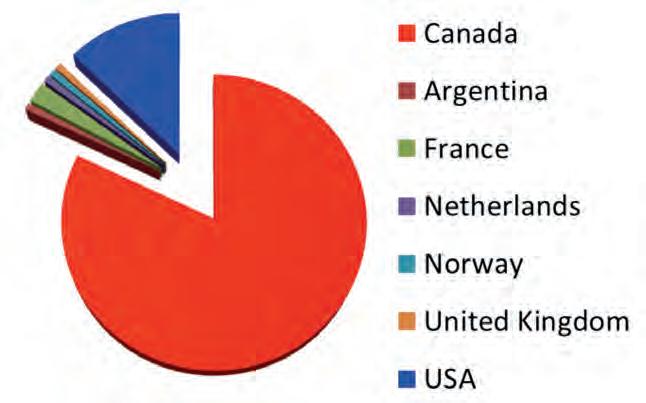
products, and data interpretations, from each discipline and each software. There are currently pain points in our workflows. We need platforms for different scopes of modeling problems and the improved ability for collaboration. Training, mentoring, and training again are the message. Sophistication
leads to the ability to adapt workflows. Modeling success is about communication across disciplines. For integrated teams, geomodeling competencies can lead to the ability to reframe the subsurface practices. Presentations are now posted to view at www.cspg.org/gussow.
F E DERAL L E GISLATIVE AC TION D elays CSPG By-law Revisions
| By CSPG President, Kirk Osadetz.
Dear Fellow CSPG members, throughout this year you have seen and perhaps read about the Board of Director’s plans to revise the CSPG By-laws, as part of our good governance responsibilities and initiatives. The CSPG Executive Committee’s goals was to provide for a stable and effective Society that was aligned to current practise. I am much indebted to our special bylaw subcommittee composed of Darren Aldridge, Jim Barclay, John varsek, Robin Mann, and myself, advised and assisted by our Executive Director Lis Bjeld. Their hard work and prudent consideration provided a vision of the best framework for CSPG Governance, which was informed of our proud tradition, progressive, and considerate of the best interests of current and future members’ best interest. I also wish to also thank all the CSPG Directors for their careful and thoughtful consideration of the proposed changes and their useful suggestions for improvement.
The proposed by-law changes were tabled at the September Board of Directors Meeting. Once the proposed changes were presented to the Board of Directors, we sent the proposed changes to our corporate legal council for vetting and advice. Without going into too many details, we have been
advised by CSPG legal counsel to delay and possible revise our proposed changes as the Federal government (the CSPG was governed by Federal Letters Patent and the “Canada Corporatons Act”) had proclaimed a new “Canada Not-for-profit Corporations Act” that came into force on October 20, 2011. It was our counsel’s advice that the CSPG not proceed with its bylaw changes at this time, as due consideration of the act and associated regulations and processes should become effective to ensure swift and successful acceptance when the CSPG does apply, hopefully in the not too distant future, to amend its by-laws.
To delay is prudent and such was the decision taken by the Board of Directors at their October board meeting. The work of the by-law subcommittee is still relevant and it will be useful in the future. It started a dialogue, to which the membership was introduced peripherally, but which you will have to consider in greater detail when we do eventually move to revise and modernize our by-laws. While the delay is regrettable, especially as it affects certain aspects of Executive Committee and Board of Directors business, it should remain invisible to the general membership, since
the goal of the process is not to change the CSPG, but to align and strengthen it.
While we remain uncertain of all of the implications of the changes resulting from the new legislation, you are welcome to familiarize yourselves with them through the following web-link: http://laws.justice.gc.ca/ eng/acts/C-7.75/index.html. Our lawyers have also provided a web-link to a guide that was prepared to help existing federal not-forprofit entities make the transition from their governance under the “Canada Corporations Act” to their future responsibilities under the new “Canada Not-for-profit Corporations Act”: http://www.ic.gc.ca/eic/site/cd-dgc.nsf/ eng/h_cs04954.html.
For this reason you will not see the previously mentioned by-law initatives on the CSPG website for your approval during the 2011 elections. The issue has not gone away, as inspection of the transition guide indicates. Neither are we currently sure of how these changes will effect both the CSPG and the CSPG ETF. No doubt we shall be returning to the membership as we become informed regarding these new requirements and regulations. My thanks in advance for your continued attention and interest.
Figure 1. Conference attendees’ country of origin.
GO TAKE A HIKE
Red Rock Canyon, Waterton Lakes National Park, Alberta
| By Stanley Williams
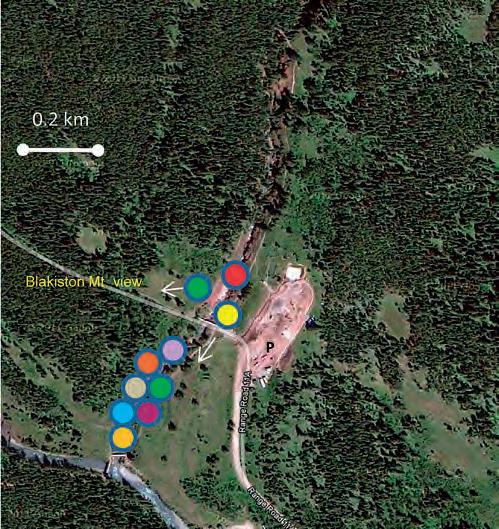
(from http://maps.google.ca )
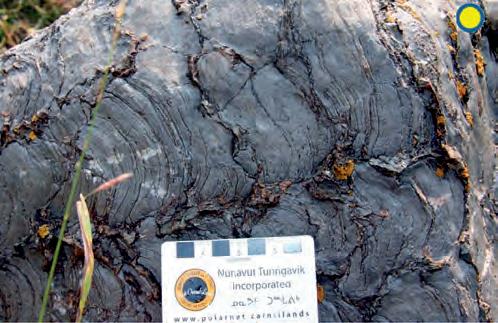
trailhead: Red Rock Canyon Parkway parking lot. Drive 15km along the Red Rock Canyon Parkway from Highway 5 (turn at the golf course).
Distance: ~1 km loop. Walk counterclockwise around the canyon and enter the canyon at the south end. The trail around the canyon is well marked. Maintained, and partially paved trail.
elevation Gain: 25m over the entire loop.
Red Rock Canyon offers a view of some of the oldest sedimentary rocks in the Canadian Rockies. In addition, there is a Purcell-aged gabbro (igneous) sill exposed in the canyon and on the face of Blakiston Mountain to the southwest. Uplift and erosion in this area of southwest Alberta has exposed Proterozoic tidal flat rocks now metamorphosed to argillite containing sedimentary features such as ripples, cyclical bedding, and desiccation polygons. The gabbro sill in the canyon provides a view of thermal metamorphic effects in the sediments.
Stromatolites of the Proterozoic Atlyn (?) dolomite also occur here in boulders at the bridge and at other localities around Waterton (Geological Wonders of Alberta, p. 197.) An overview of the Grinnell Formation argillite – red and light green tidal-flat deposits – can be seen from the bridge looking north. The term “argillite” is used for muddy rocks that are harder and less “splitty” than shale and can contain silt-sized grains (Gadd 2009).
A good overview of the canyon rocks is possible from the rim walk surrounding the canyon. I like to enter the canyon at the south end at the bridge over Red Rock Canyon Creek. The Purcell gabbro is black and massive in appearance, but look for slickensides in the gabbro. The contact of the Purcell with the Grinnell forms a contact areole about 3-4 metres thick. The thermally metamorphosed Grinnell is light green in colour. It is thin bedded and up close appears to be rippled in places. Ripple marks can also be found in the red-coloured Grinnell.
Progressing up the creek, the upper transition of the contact areole is less distinct and the colour grades from light green through maroon to the brick-red colour of the Grinnell argillite. Desiccation polygons, preserved in the Grinnell, formed during exposure on the tidal flat and dried. Walk the rim to get a better overview of some of the geological features in the canyon such as the cyclical nature of the deposition. This is a fun (if not strenuous!) hike to view some interesting rocks.
references: Mussieux, R. and Nelson, M. 1998. A Traveller’s Guide to the Geological Wonders of Alberta. Federation of Alberta naturalists and the CSPG. Gadd, Ben. 2009. Handbook of the Canadian Rockies, 2nd Edition. Corax Press.
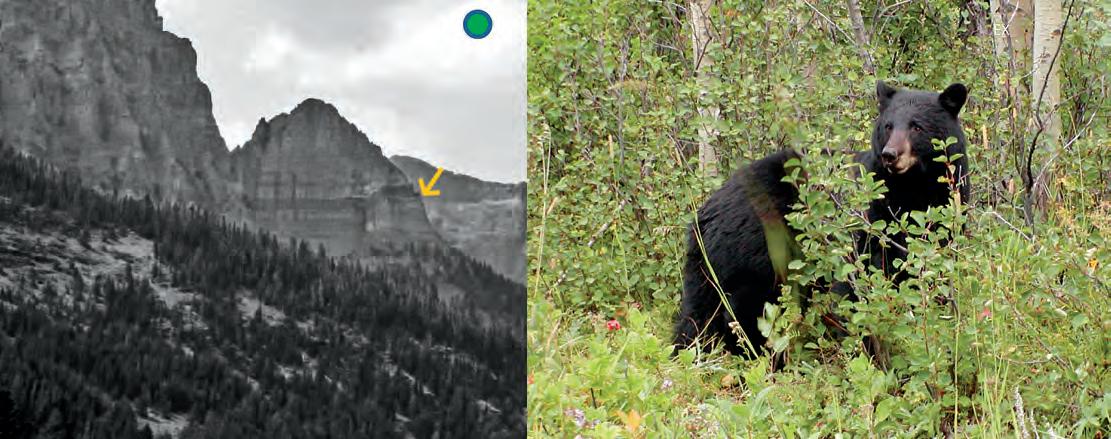

by
Background
Photo
Astrid Arts.
Proterozoic Atlyn(?) Fm. stromatolitic dolomite.
Purcell gabbro sill in the face of Mt. Blakiston (arrow) in a view from Red Rock Canyon.
A possible sighting on Red Rock Canyon Parkway! Be aware of wildlife – “bear jams” can occur quickly. Photo courtesy of Terry Novak.

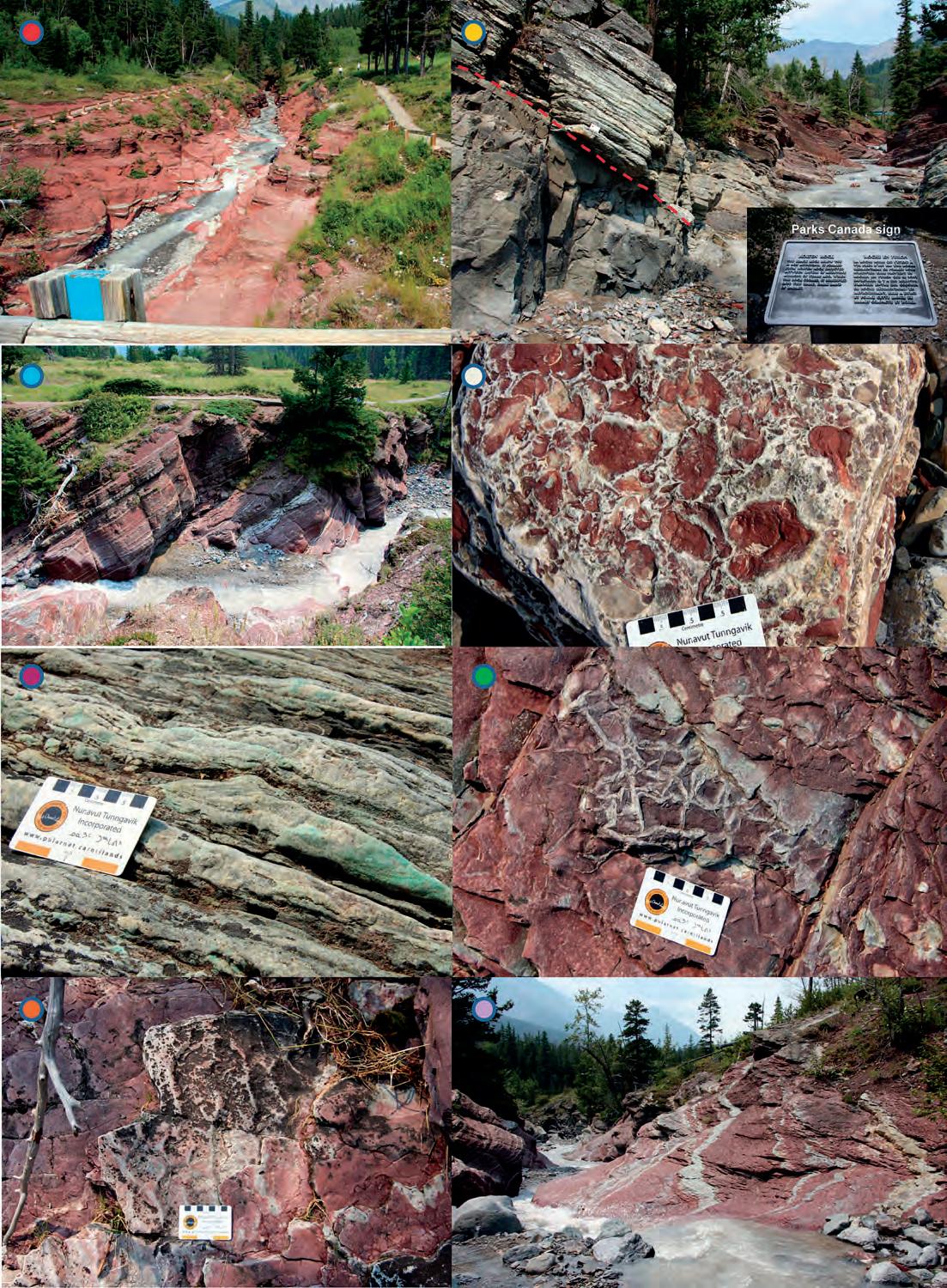
Grinnell Fm. Argillite at the parking lot bridge.
Purcell gabbro/Grinnell Fm. argillite contact (red line).
Grinnell Fm. Argillite overview of cyclical beds from the canyon rim. Storm rip-up clasts.
Thermally metamorphosed argillite in the gabbro contact areole. Desiccation polygons.
Rippled mudstone.
Grinnell Fm. argillite alternating red/green coloured beds.
Since 1927...

CORPORATE MEMBERS
APACHE C ANADA LTD
APEGGA
BAKER ATLAS
B DO C ANADA LLP
C ANADIAN NATURAL RESOURCES LTD.
C A SEY & AS SOCIATES
CONOCOPHILLIPS C ANADA LIMITED
DE vON C ANADA CORPORATION
E NERPLUS CORPORATION
E x xON MOBIL UPSTREAM RESEARCH COMPANY
GEOLOGIC SYSTEMS LTD
GEOSTRATA RESOURCES INC.
H U NT OIL COMPANY OF C ANADA
H USKY ENERGY INC.
IHS
IM PERIAL OIL RESOURCES
JEWELSUITE
LITTLE ROCK DOCUMENT SYSTEMS
MJ SYSTEMS
M URPHY OIL COMPANY
NE xE N INC
PE NN WEST PE TROLEUM LTD.
PE TROCRAFT PRODUCTS LTD
PLUSPETROL S.A
ROx AR
RPS E NERGY C ANADA LTD
SCHLUMBERGER
S HELL C ANADA LIMITED
S PROULE AS SOCIATES LIMITED
SU NCOR E NERGY INC
TALISMAN ENERGY INC .
TOTAL E&P CANADA LTD.
TOU RMALINE OIL CORP
A S OF NOVEMBER 10, 2011
CSPG welcomes our 2011 Corporate Members!
The benefits of being a corporate member include:
• Recognition in the monthly Reservoir and quarterly Bulletin
• One associate membership
• Reserved tables at the technical luncheons with your company logo
• One free pass to the CSPG Core Conference …and more! Contact Kasandra Klein at kasandra.klein
@cspg.org to be a corporate member today!
2011/2012 U N DERGRADUATE Awards and Grants
| by Sandra Rosenthal and Aaron Grimeau
The University Outreach Committee oversees two funding opportunities for students who have taken advantage of the free CSPG student membership: the Undergraduate Awards, and, new for the 2011/2012 school year, the CSPG University Student Event Grants.
The Undergraduate Awards are awarded to individuals who display an aptitude and passion for sedimentary and petroleum geology. The Student Event Grants are awarded to student societies or organizations that wish to host a field trip, short course, or other educational event pertaining to soft-rock geology and to oil and gas exploration and development.
S T UDENT E V ENT G R ANTS
T here will be three grants in the amount of $1,000 each that will be awarded across Canada, one to each of the first three regions listed below, and two awards of $1,000 not restricted by region (Canadawide). Regions are defined as follows:
• Atlantic and Quebec Universities
• Central and Ontario Universities
• Western Universities
• Canada-wide
In order to apply for the grant, the applicants need to be full-time students enrolled in a Geology or Earth Science program at a Canadian University and current CSPG student members. Applications must include a 500-600
word summary on the event and how it pertains to Petroleum or soft-rock geology. As well, a signed reference from a supporting/attending professor must be enclosed. The deadline for applications will be March 9, 2012.
U
NDERGRADUATE AwA RDS
T he CSPG Undergraduate Awards will again be offered this year with four awards of $500.00 to each of the four regions defined above.
Funded by the CSPG Education Trust Fund, these awards will be allocated to students who demonstrate an interest in and talent for soft-rock geology or petroleum exploration and development. Undergraduate students may apply by providing a personal essay, a letter of recommendation from a professor, and evidence of academic standing (such as an applicant’s transcript). Once again applicants need to be full-time students enrolled in a Geology or Earth Science program at a Canadian University, with current membership with the CSPG. The deadline for applications will be January 27, 2012.
For questions regarding either the CSPG Undergraduate Awards or the Student Event Grants, please contact either Sandra Rosenthal or Aaron Grimeau with the CSPG University Outreach Committee.
Don’t miss the CSPG OP e n HOu S e m onday, December 12 11:30am to 5:30pm
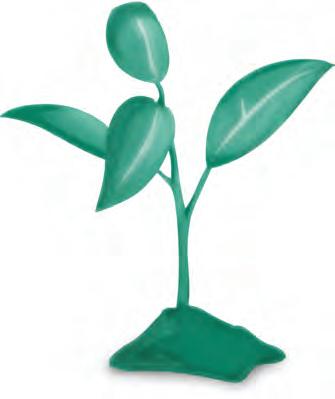
Investing in the Future
At APEGGA we like to make science fun! We also hope to attract the best and brightest students to careers in geoscience. And we remain committed to building strong relationships with the geoscience community. Put that all together and you get an active geoscience outreach and sponsorship program.
In fact, every year APEGGA provides in-kind donations and thousands of dollars to multiple groups as a sponsor of organizations and events including: Alberta Science Literacy Society, Alberta Women’s Science Network, Burgess Shale Foundation, Canmore Museum and Geoscience Centre, Doodle Train, Earth Sciences for Society, Geophysics Undergraduate Student Society, Geoscience Day, Honorary Address, P.S. Warren Undergraduate Geological Society, PTAC Spring Water Forum, Rock ‘N’ Fossil Clinics, Rundle Group of Geology, Science Alberta Foundation, Seismic in Motion, Stones and Bones Summer Camp, TELUS World of Science Calgary and Edmonton and W.C. Gussow Geoscience Conference as well as multiple science olympics and science fairs.
That’s because, like you, we see sponsoring geoscience outreach organizations and events as an investment in future human capital and an important opportunity to raise awareness of the wealth generation and quality of life made possible by geoscientists right here in Alberta.
By working with Alberta’s geoscience community, we help to ensure that today’s students become tomorrow’s geoscience leaders.
Investing in the Future: Visit www.apegga.org for more information or call Tom Sneddon, P.Geol., Geoscience Affairs Manager at 403-262-7714 or 1-800-661-7020.

Only an unbiased comparison reveals the optimal conveyance method for your formation evaluationneeds.
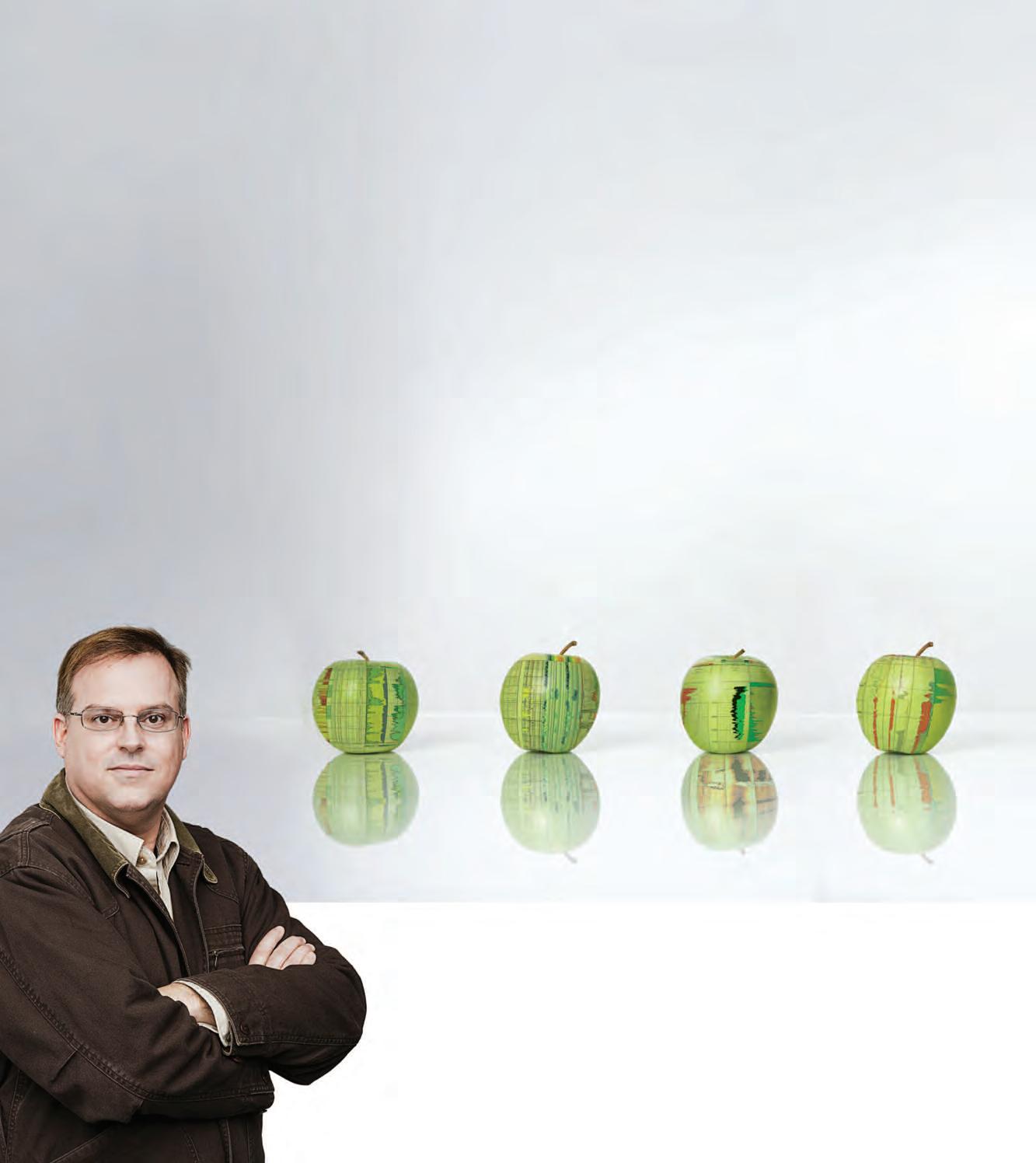
Maximizing reservoir production while minimizing development costs can be a complex journey. The experts from Halliburton will collaborate with you all along the way, beginning with an approach to formation evaluation that’s free from preconceived acquisition preferences.All methods are considered—wireline, logging while drilling, surface data logging, sub-surfa ce testing, coring or a combination of technologies—with only the most value-added method being proposed.
What’s your challenge? For solutions, go to Halliburton.com/ofe.
